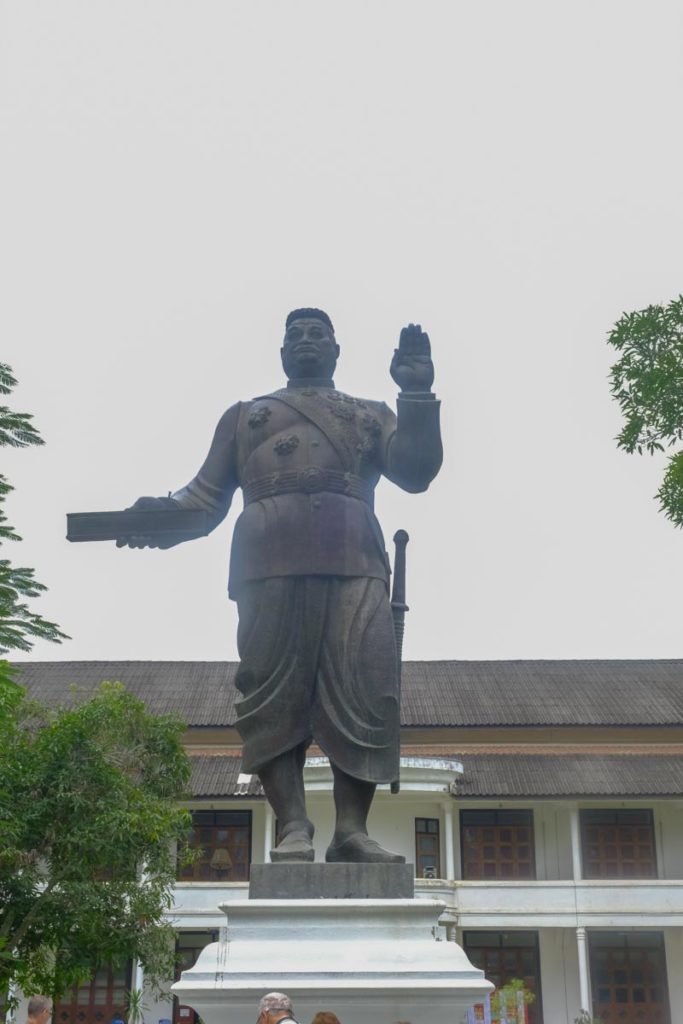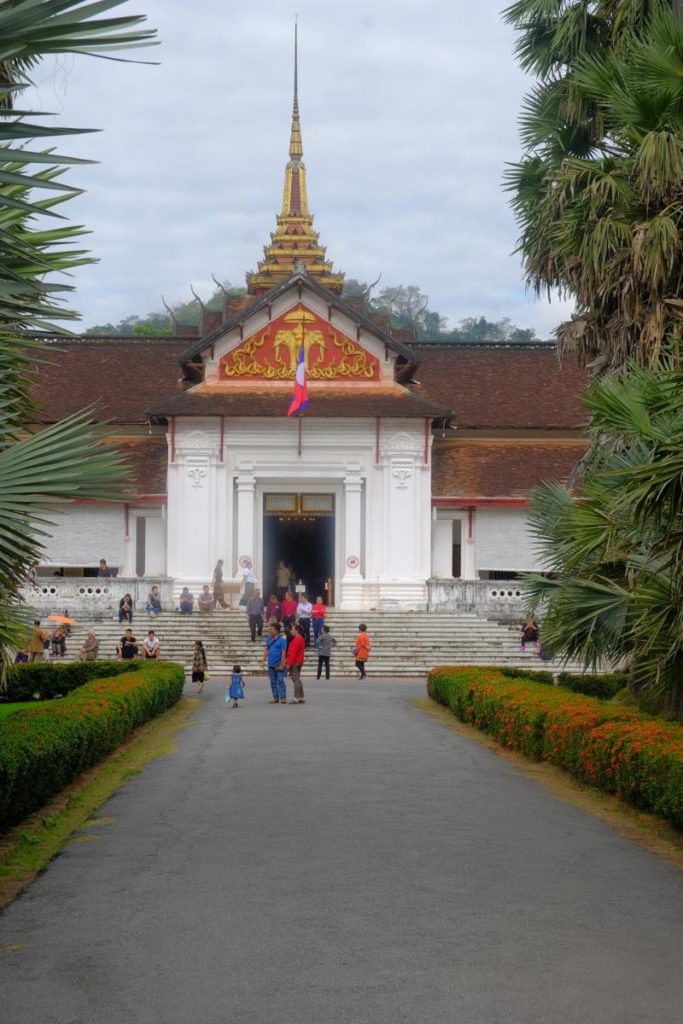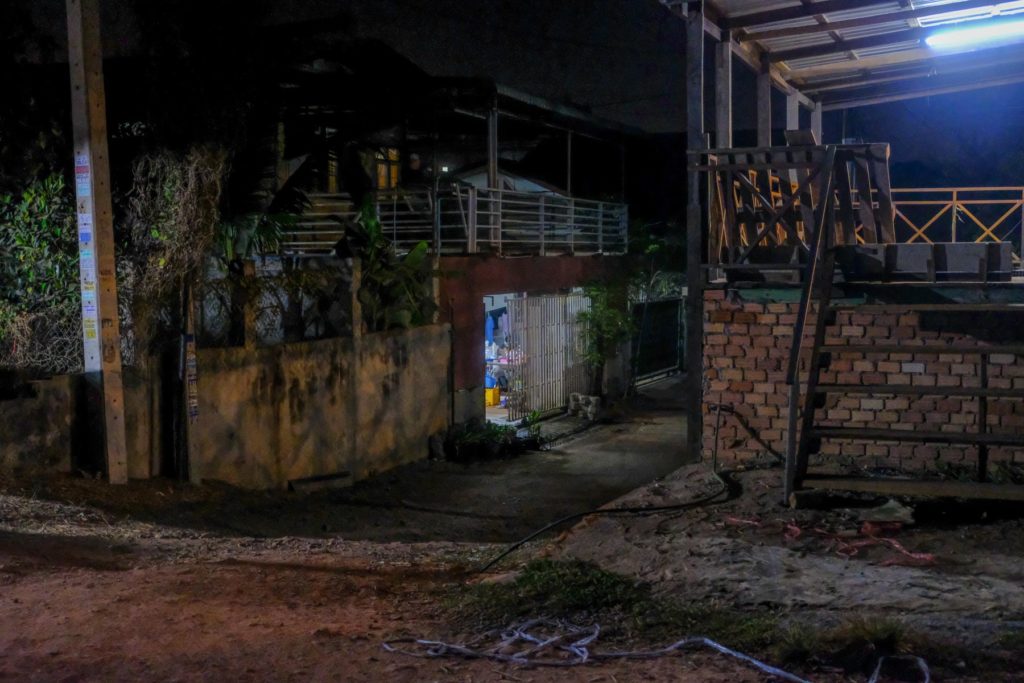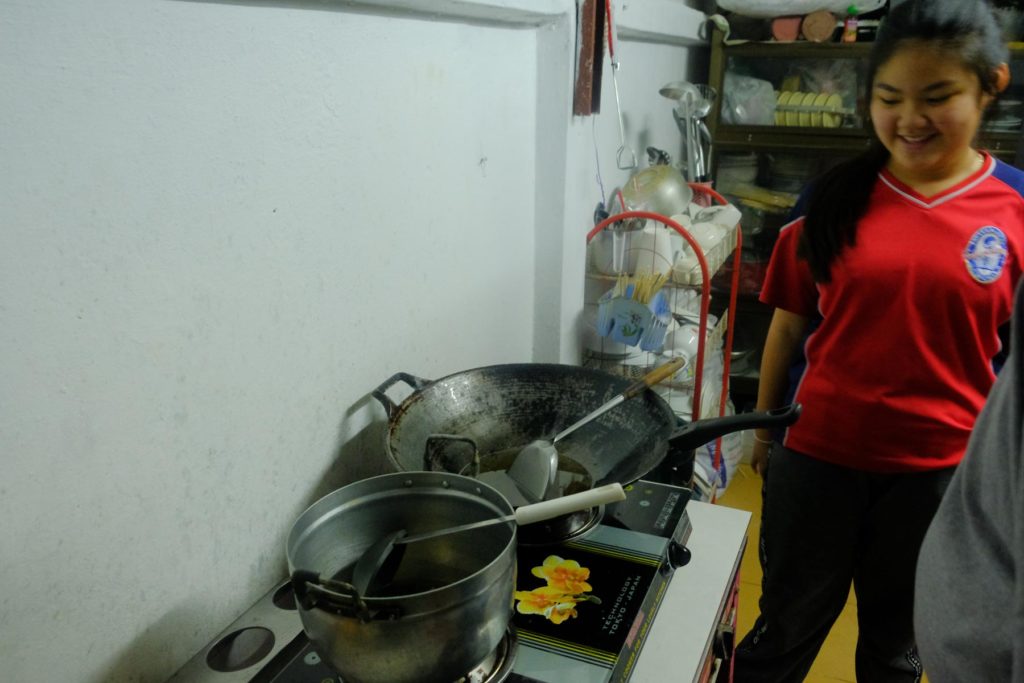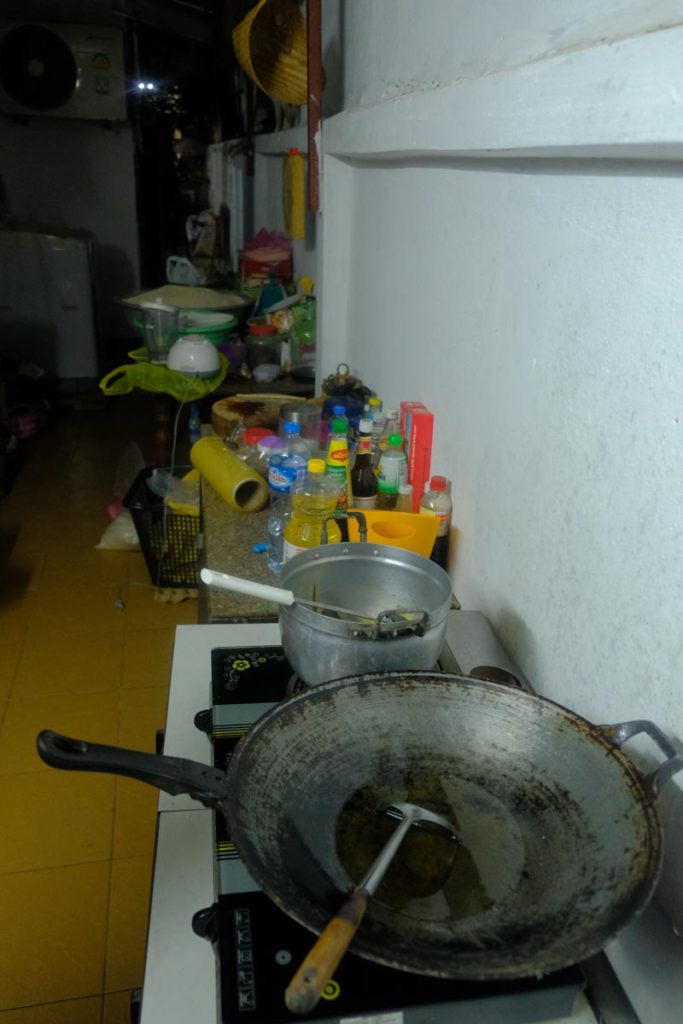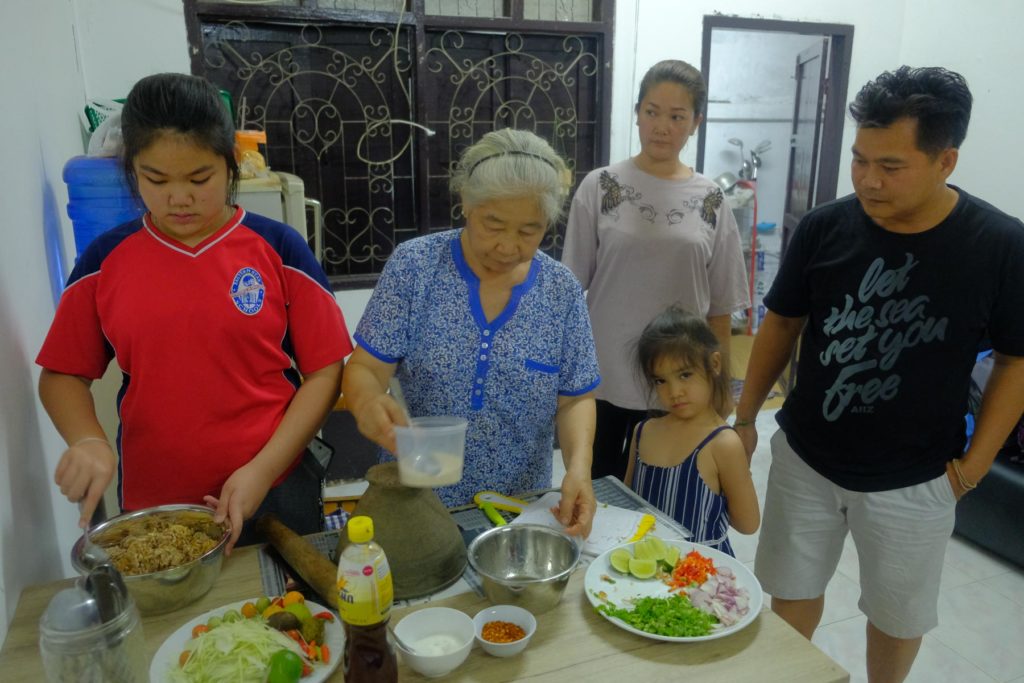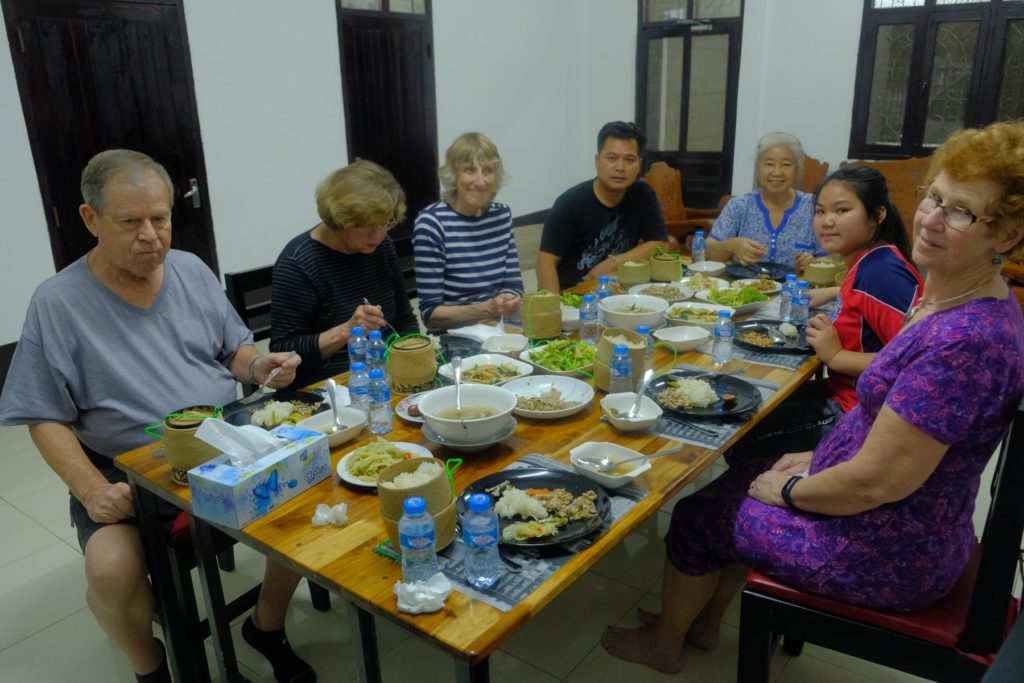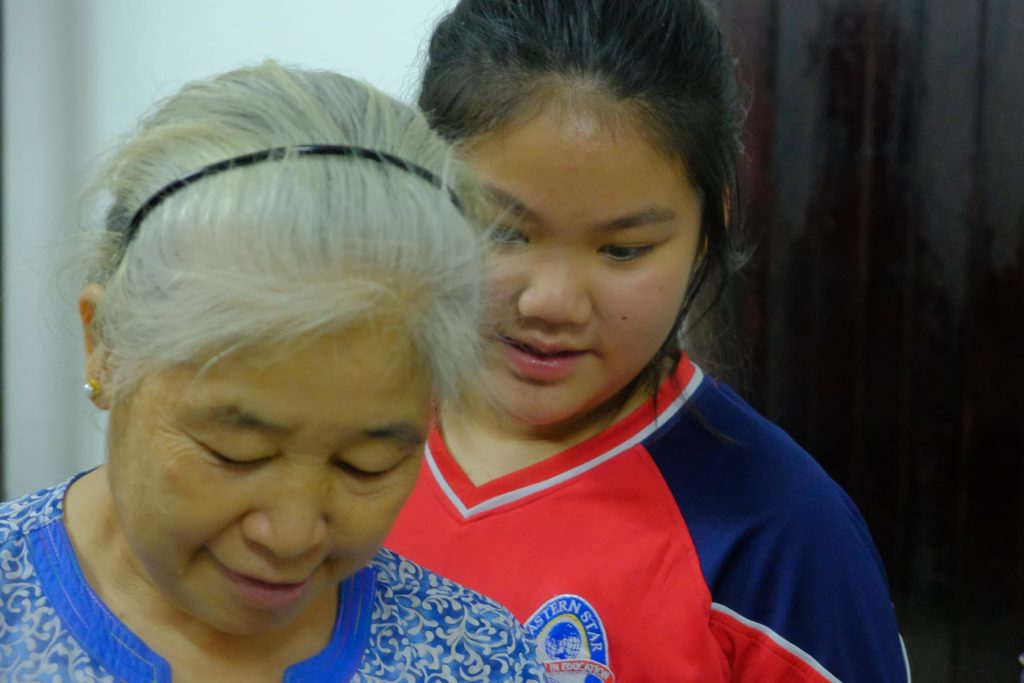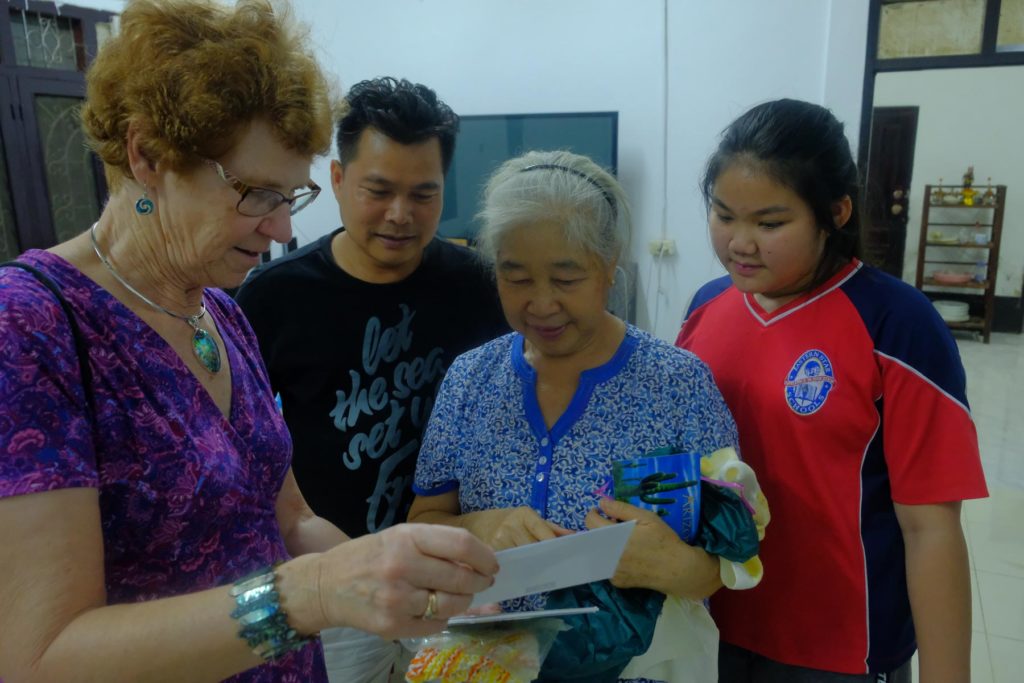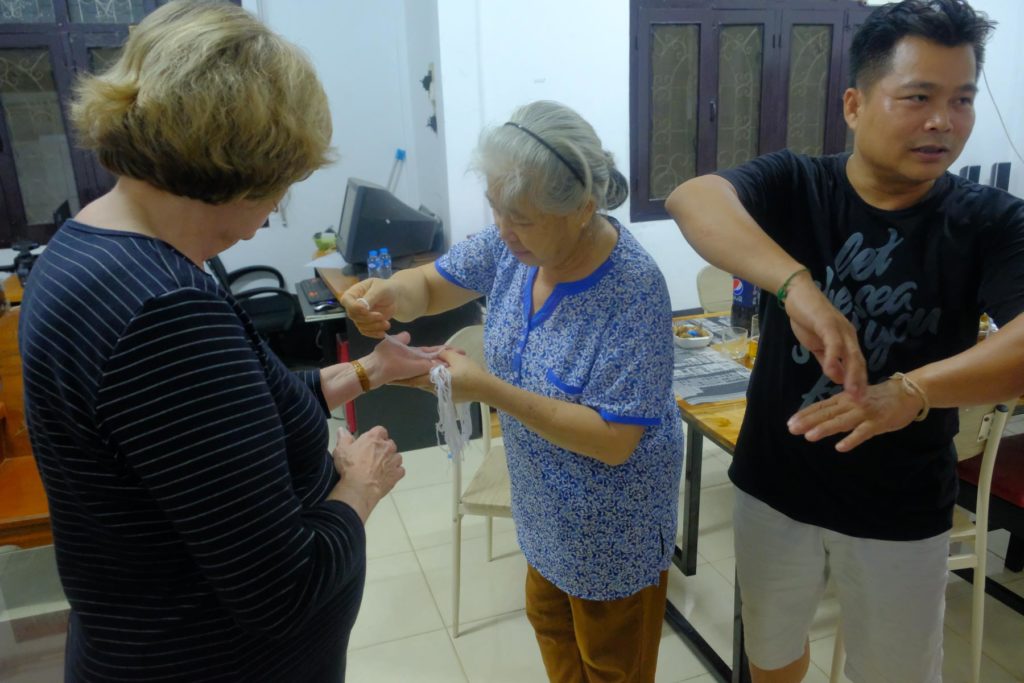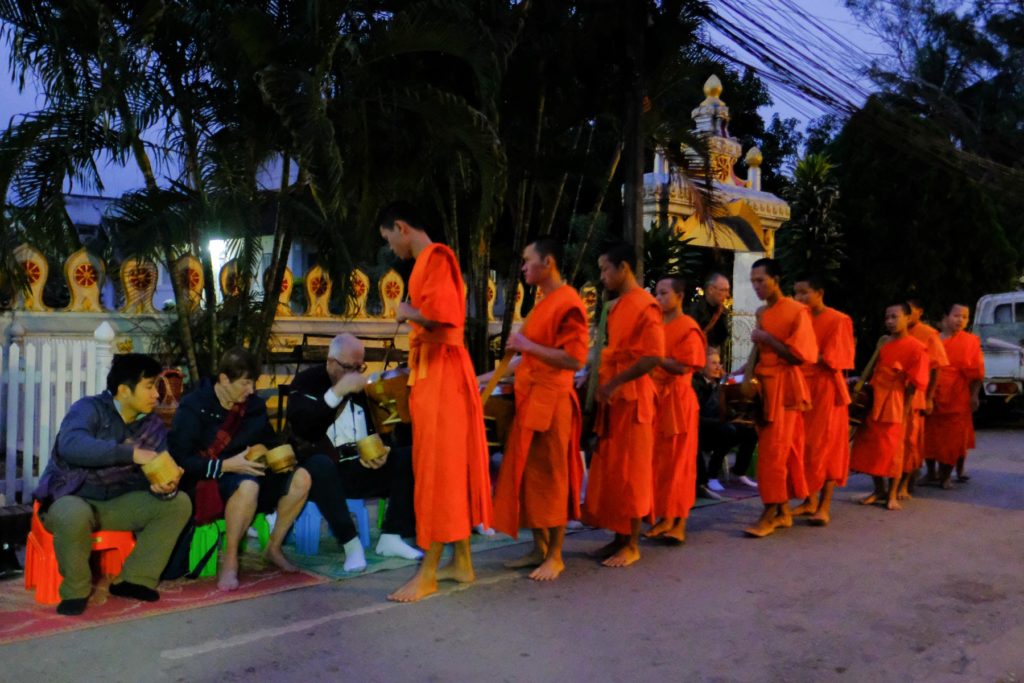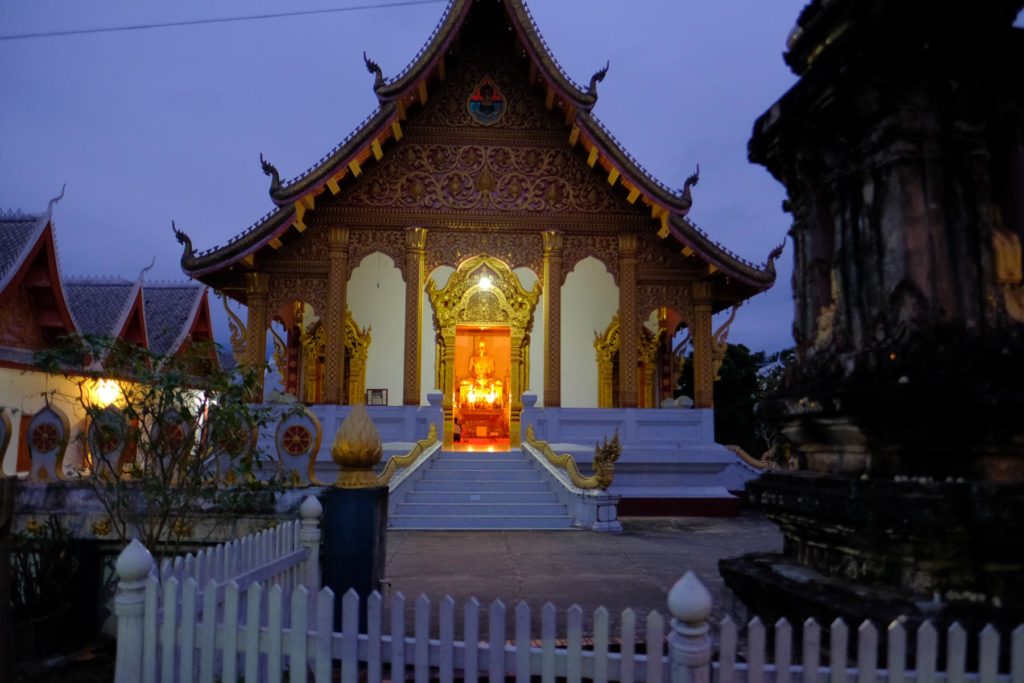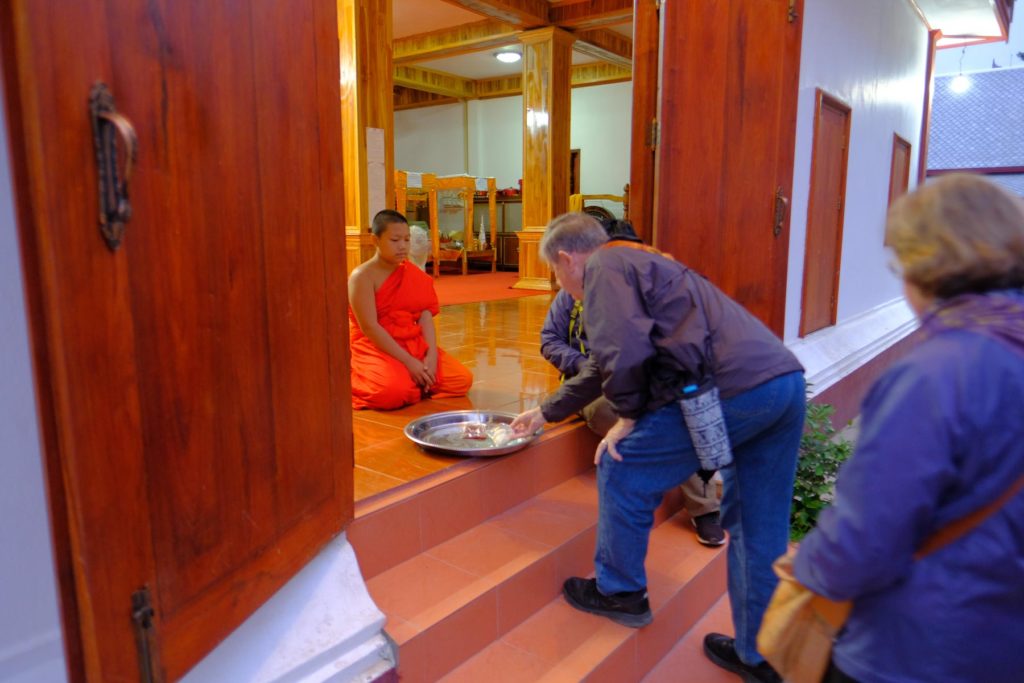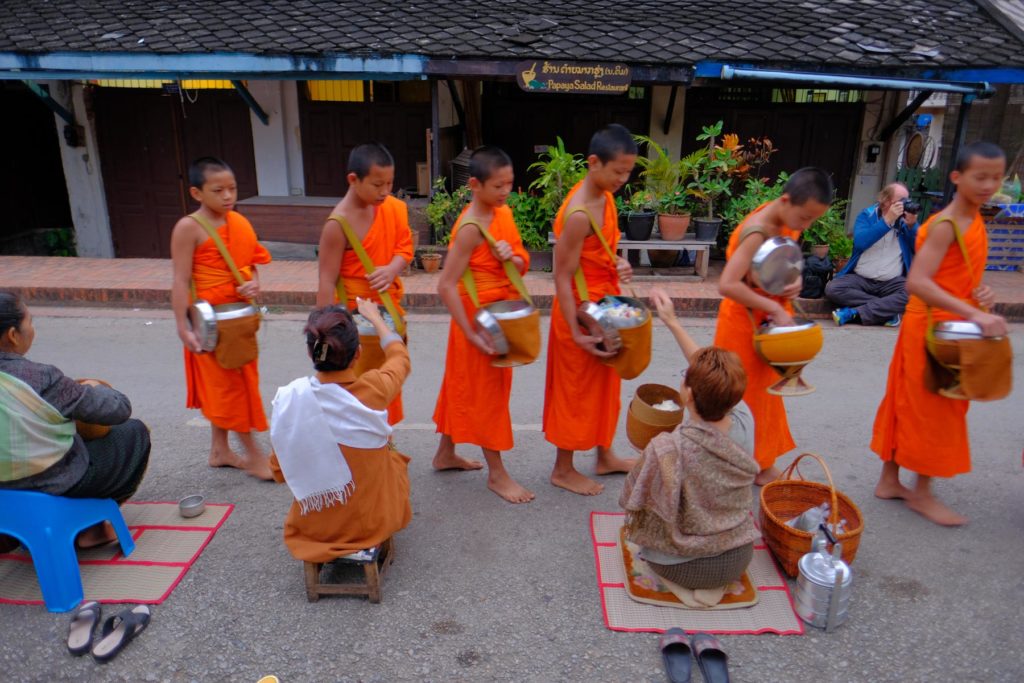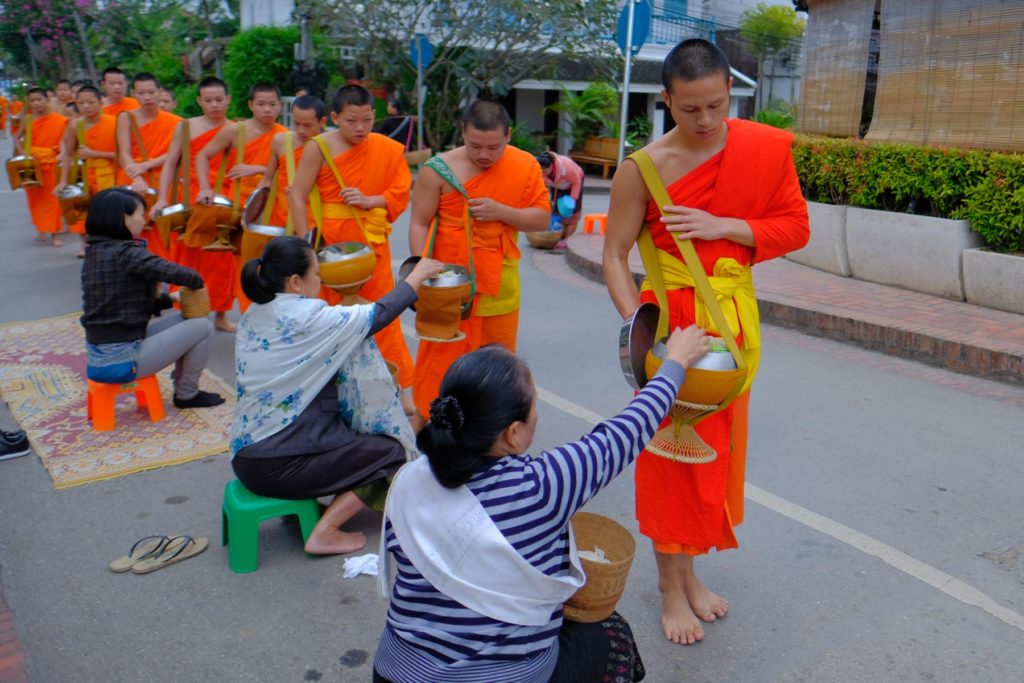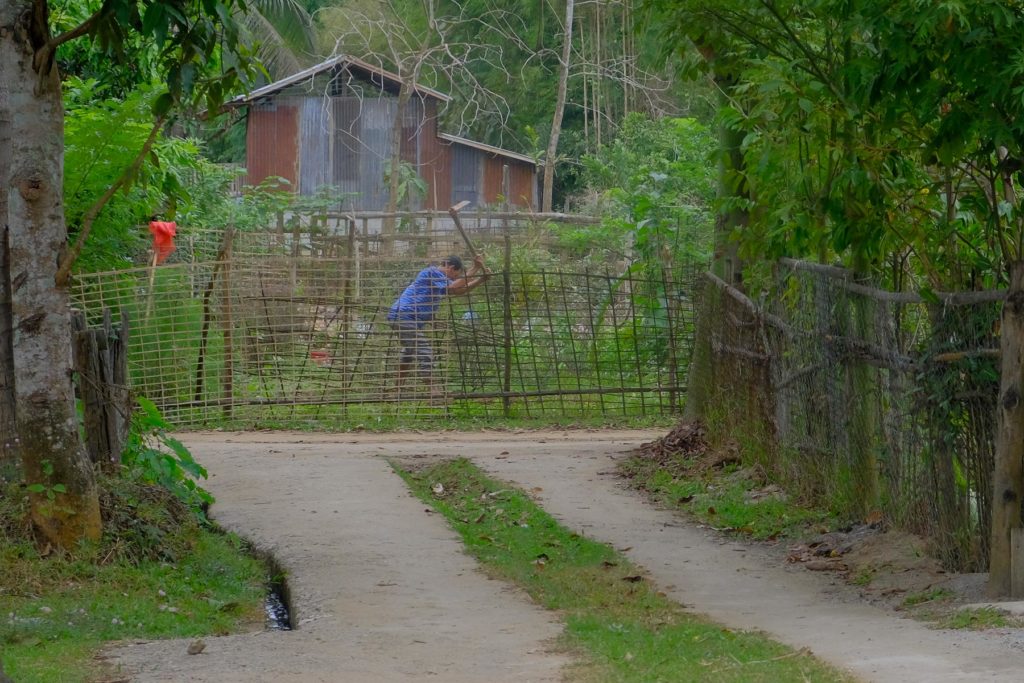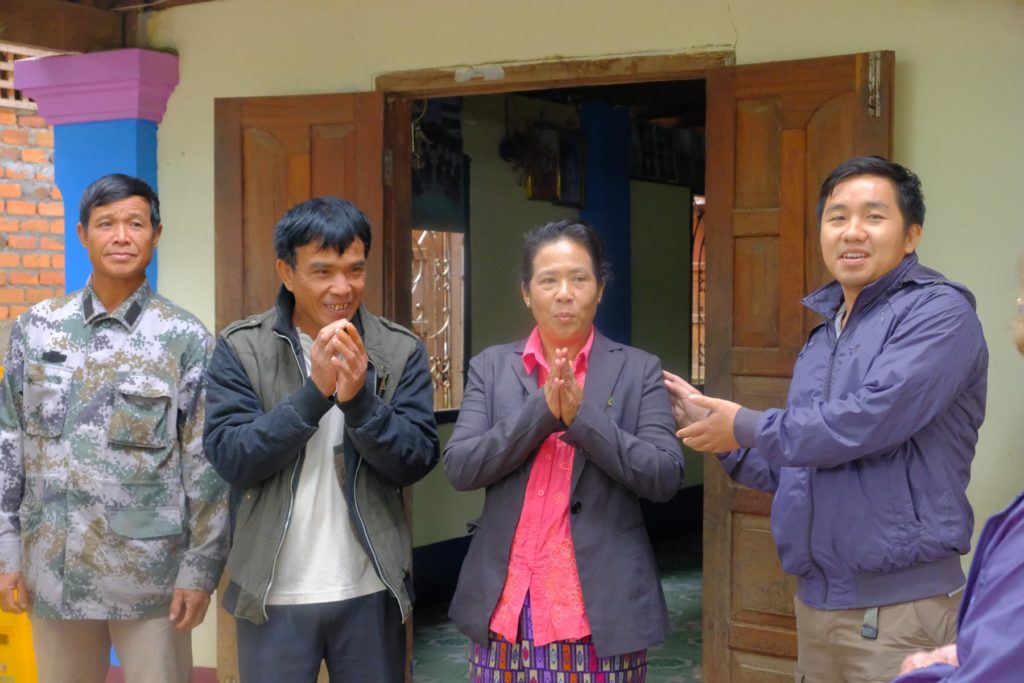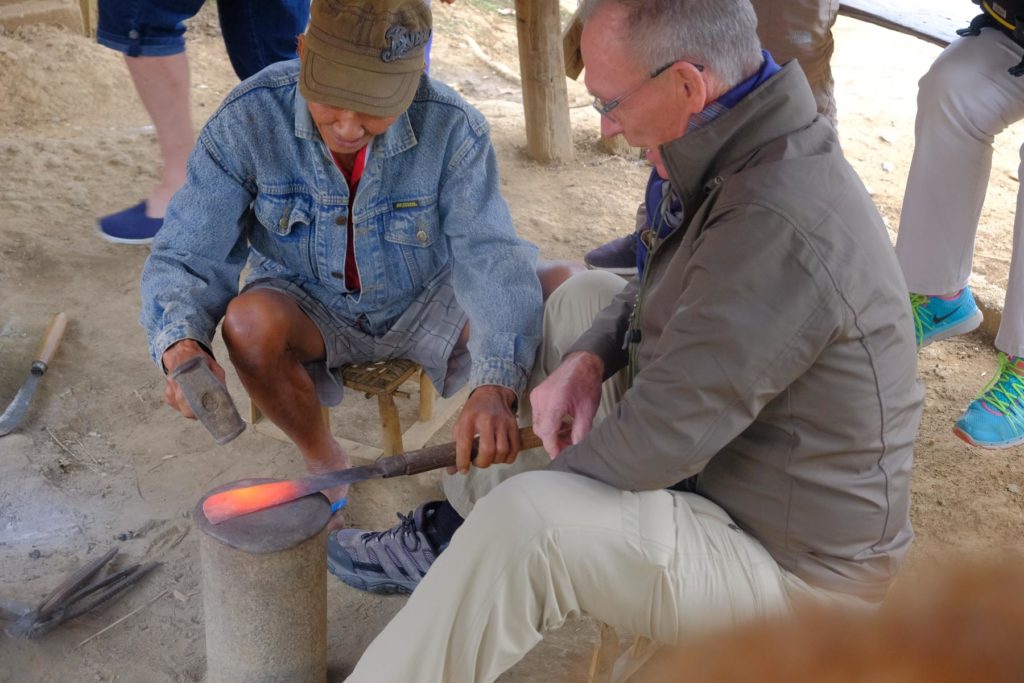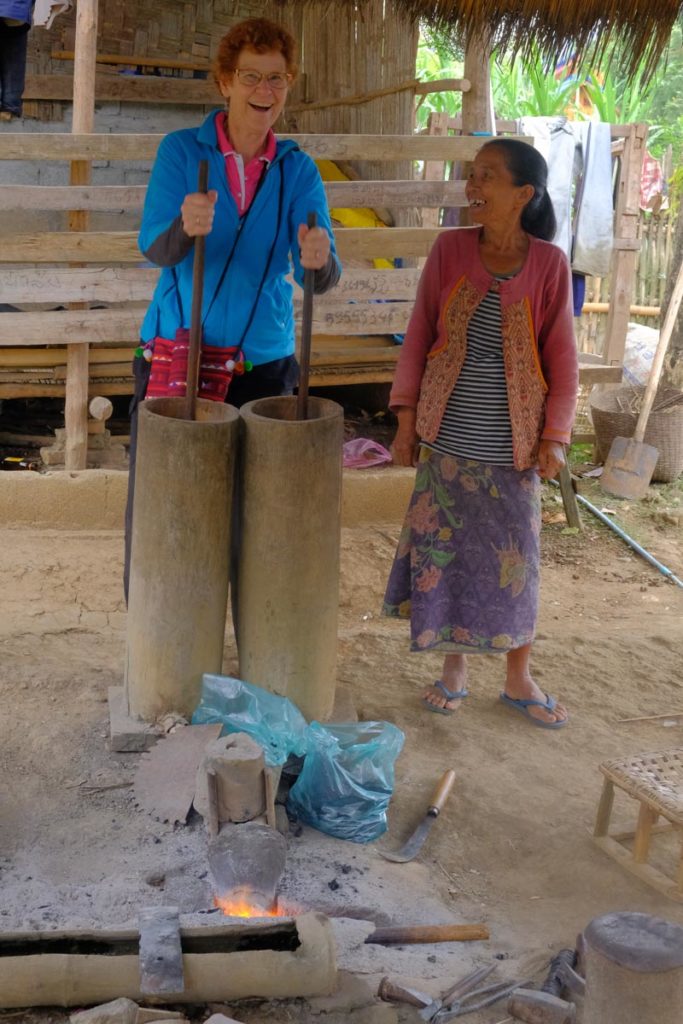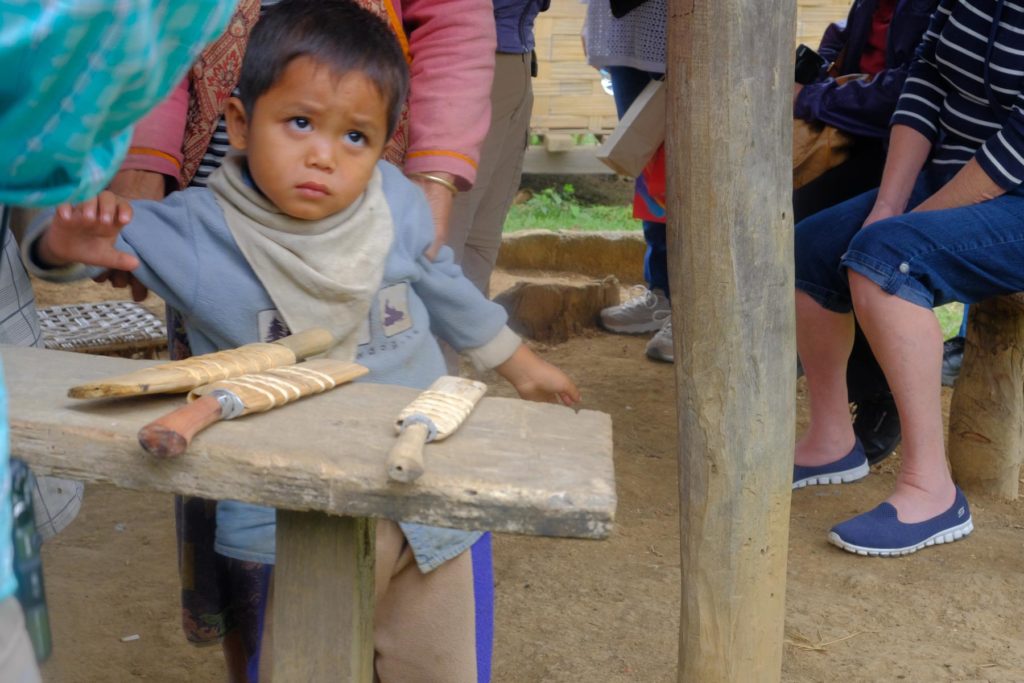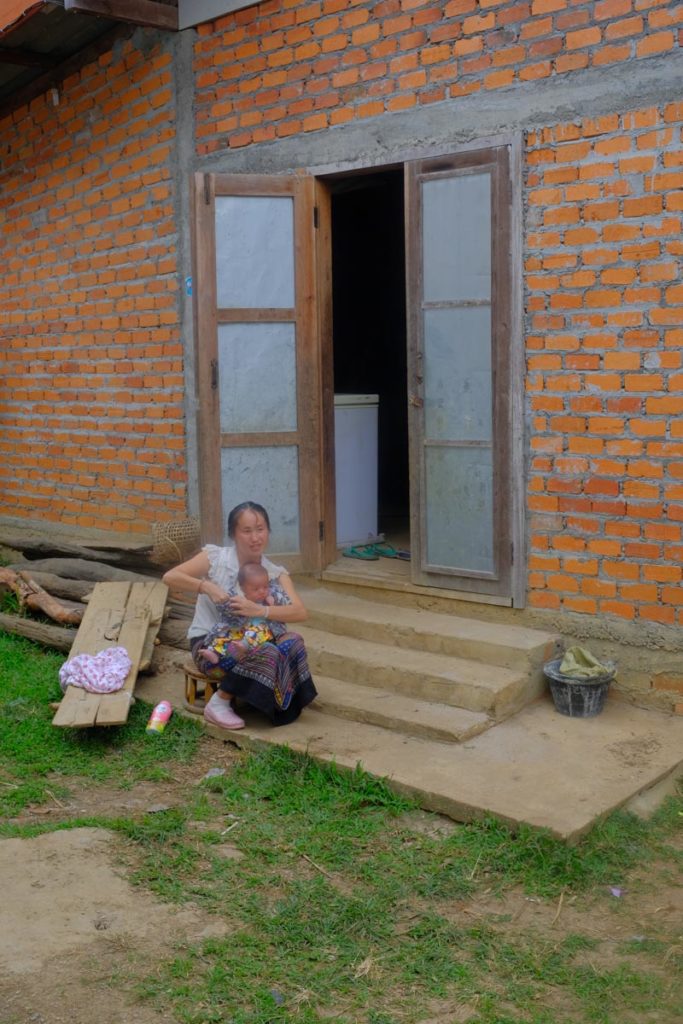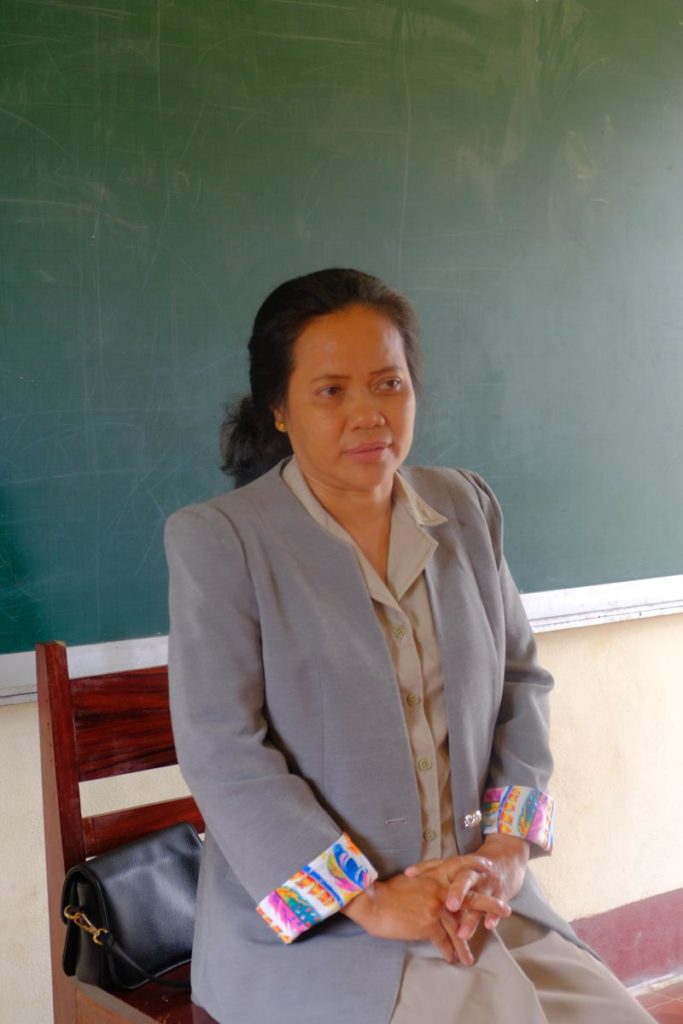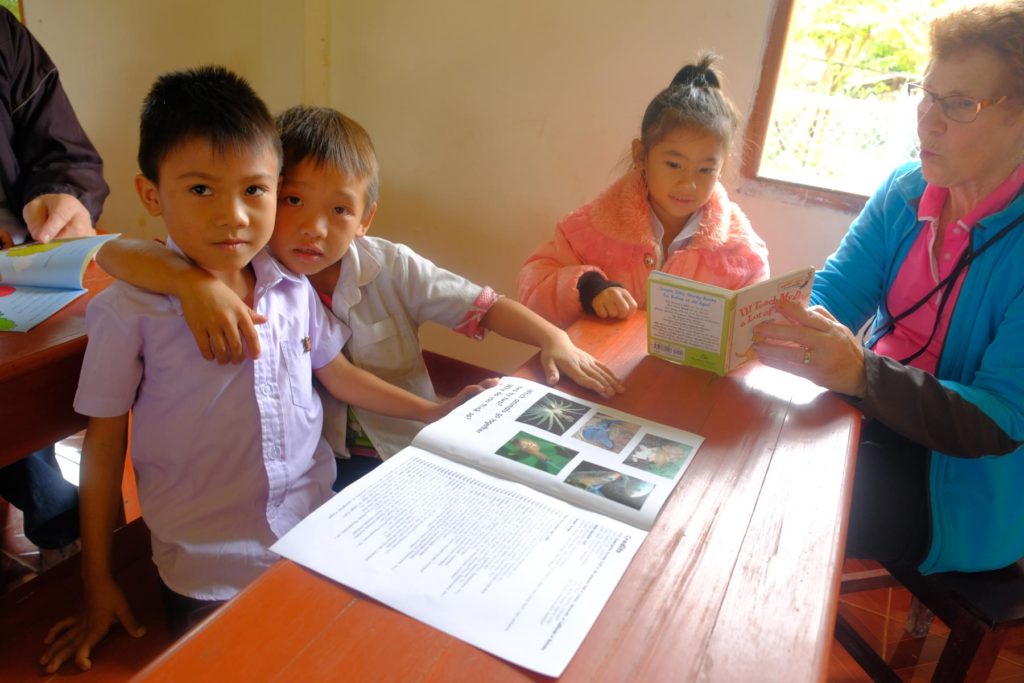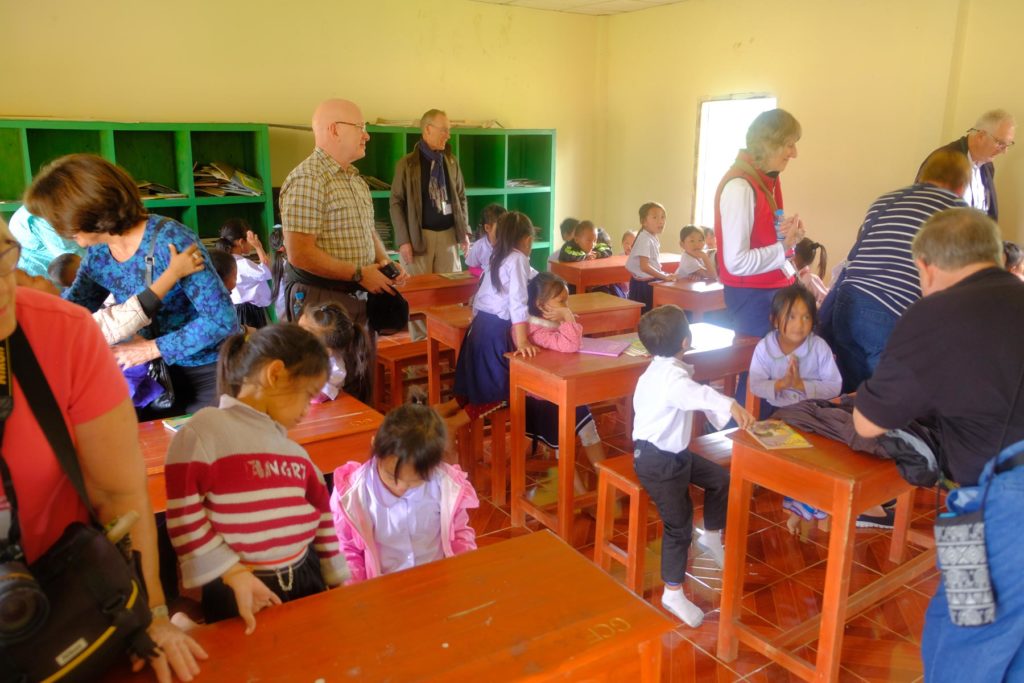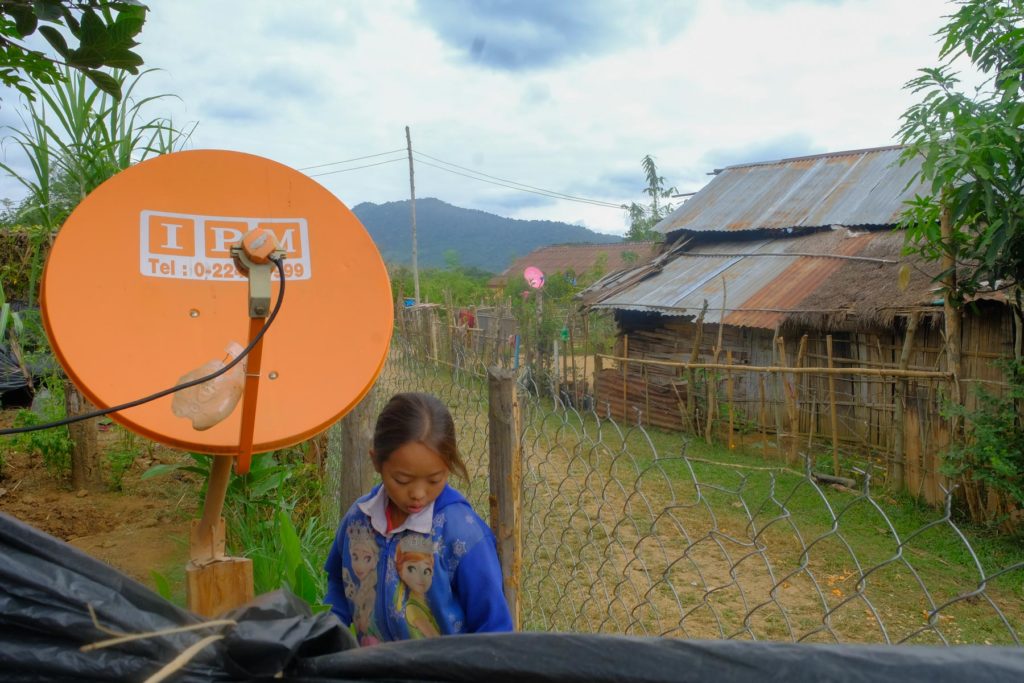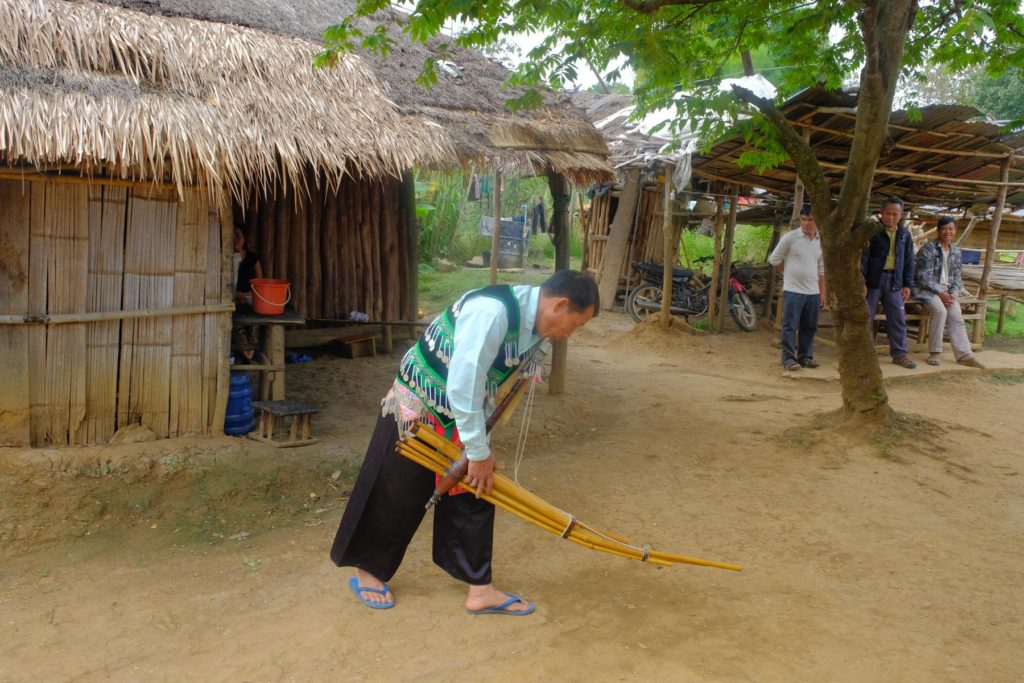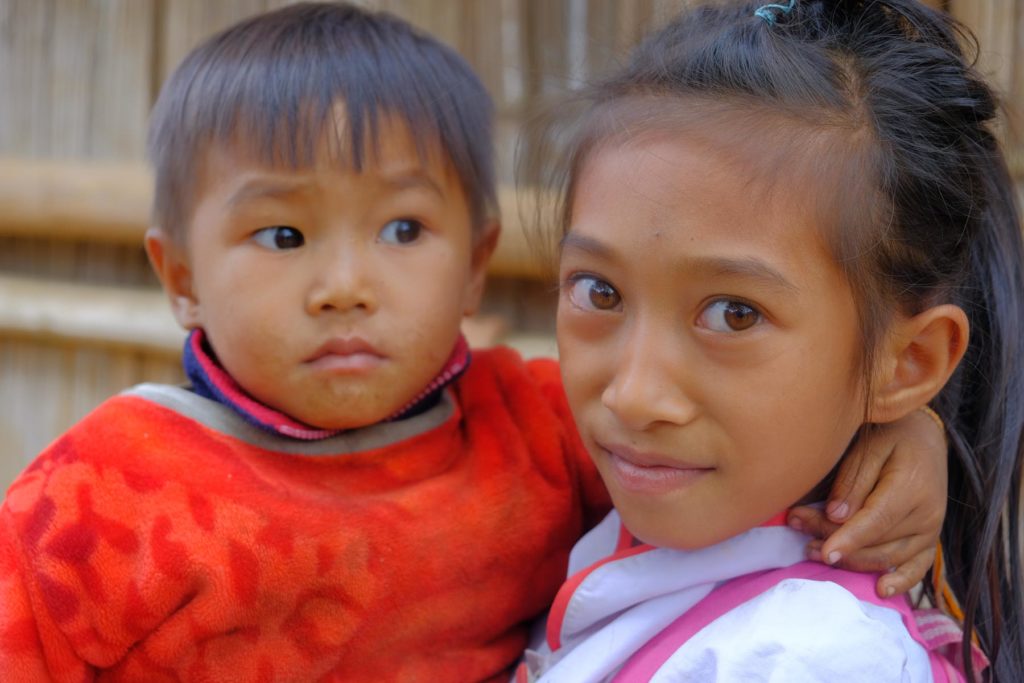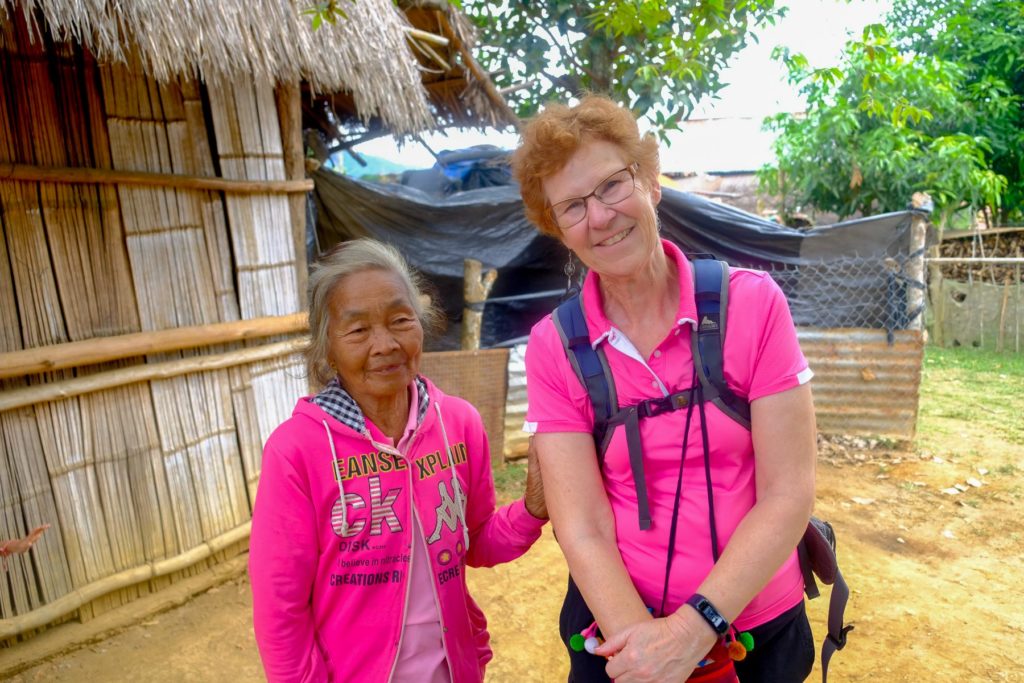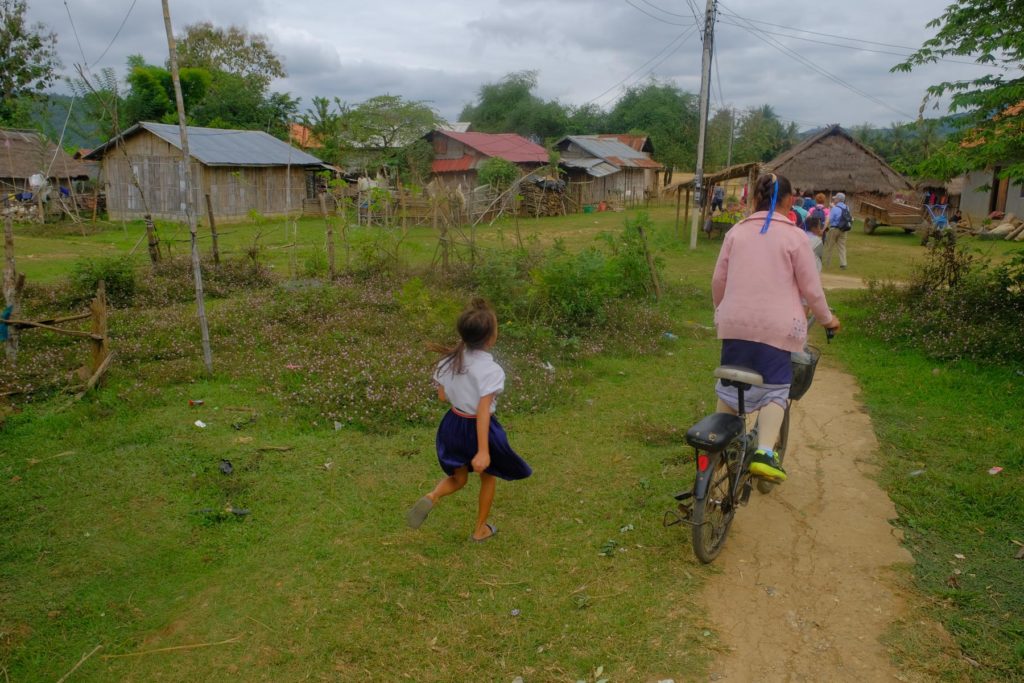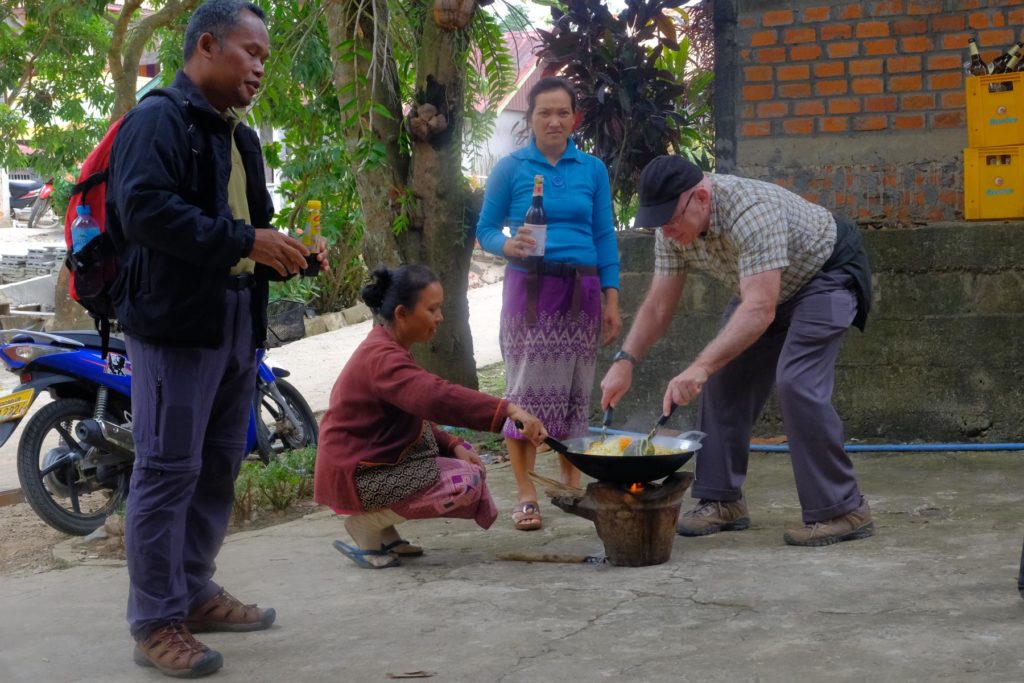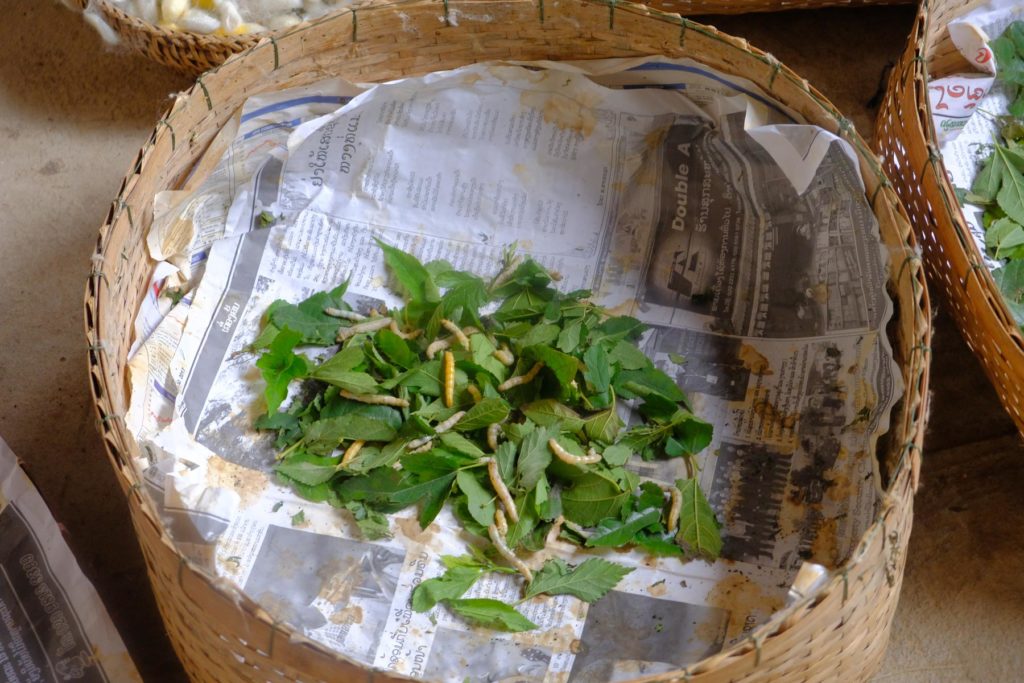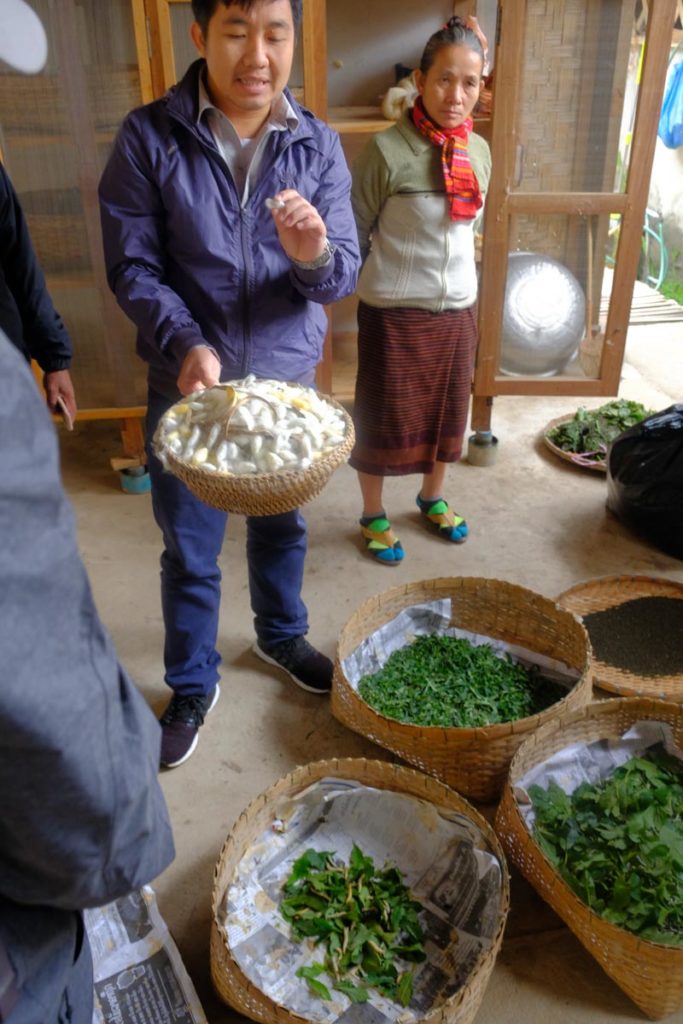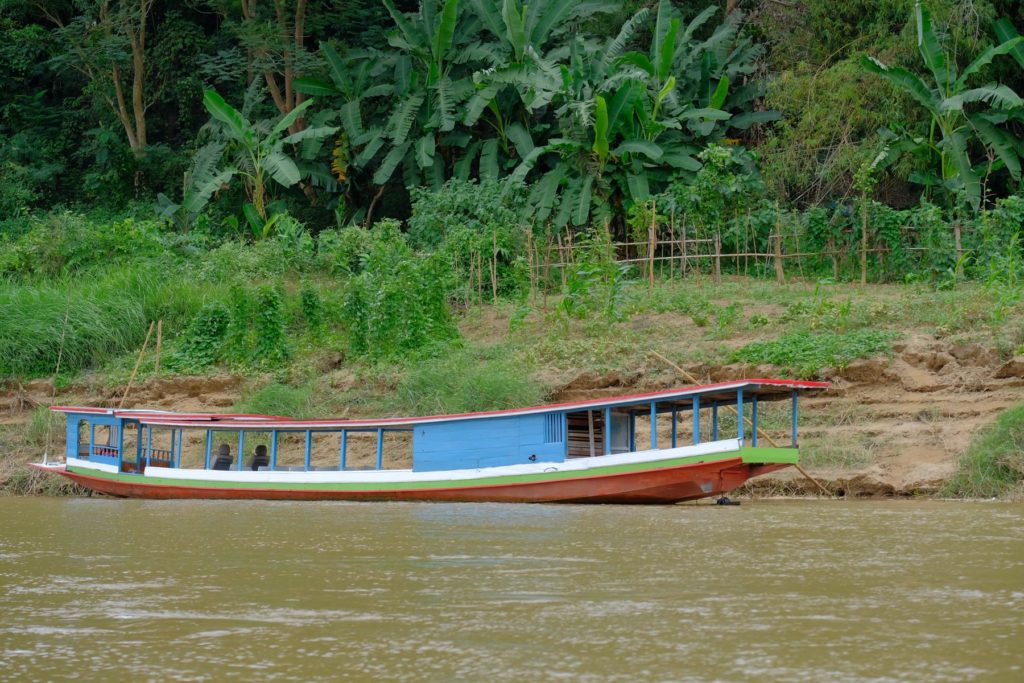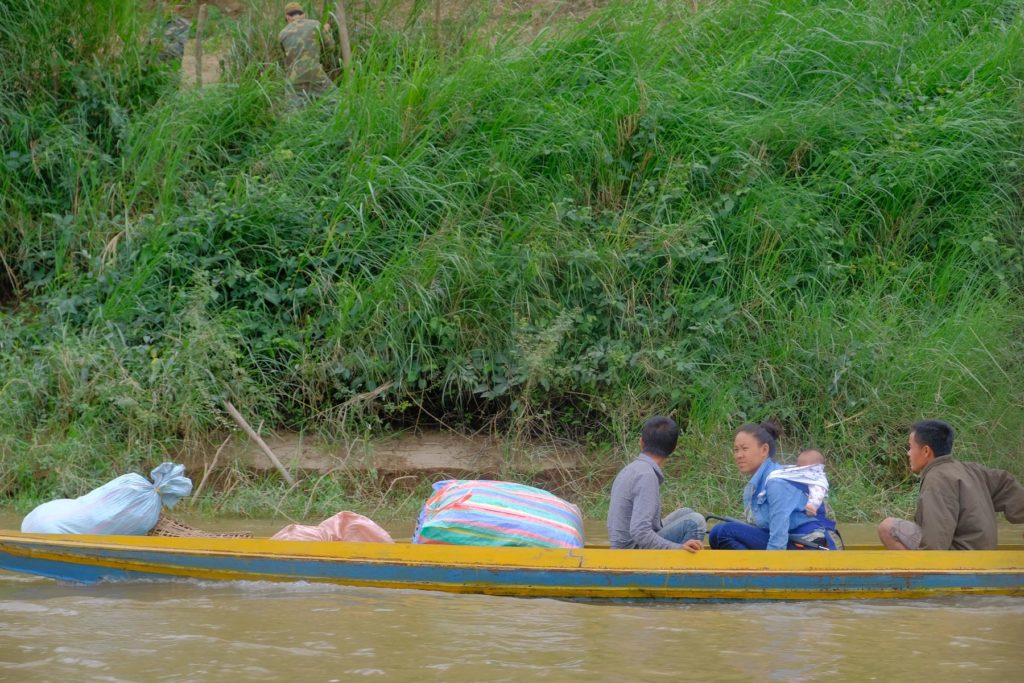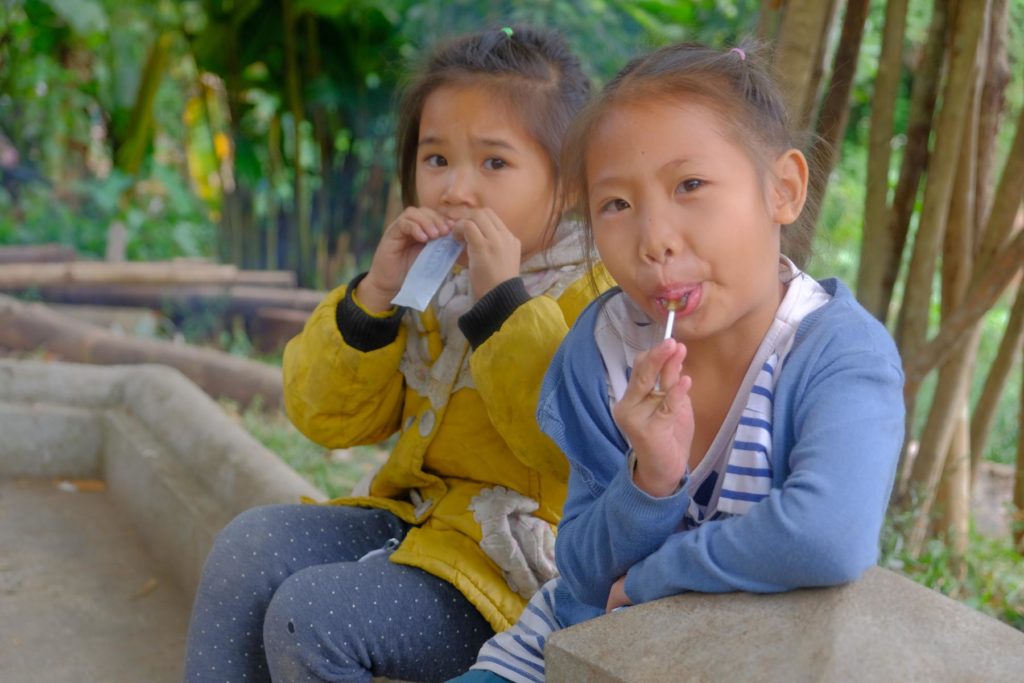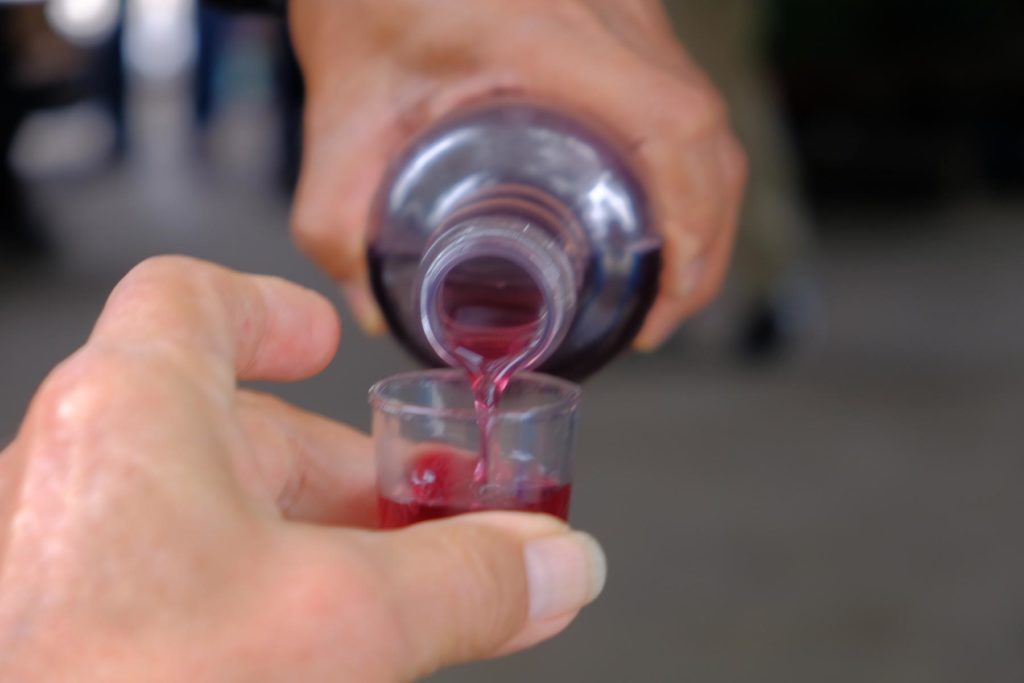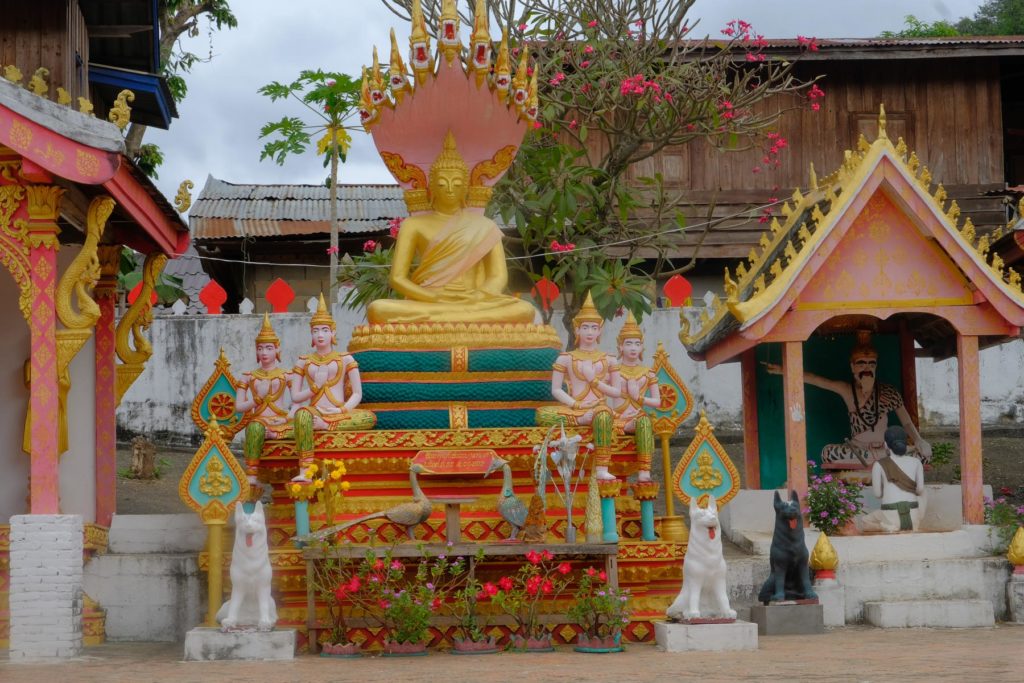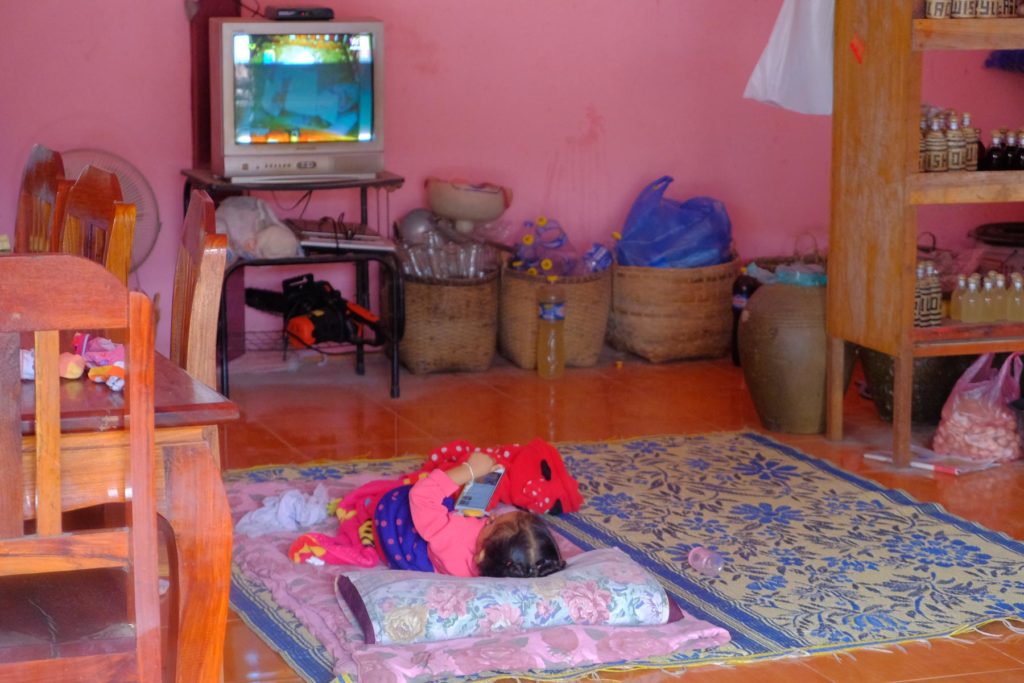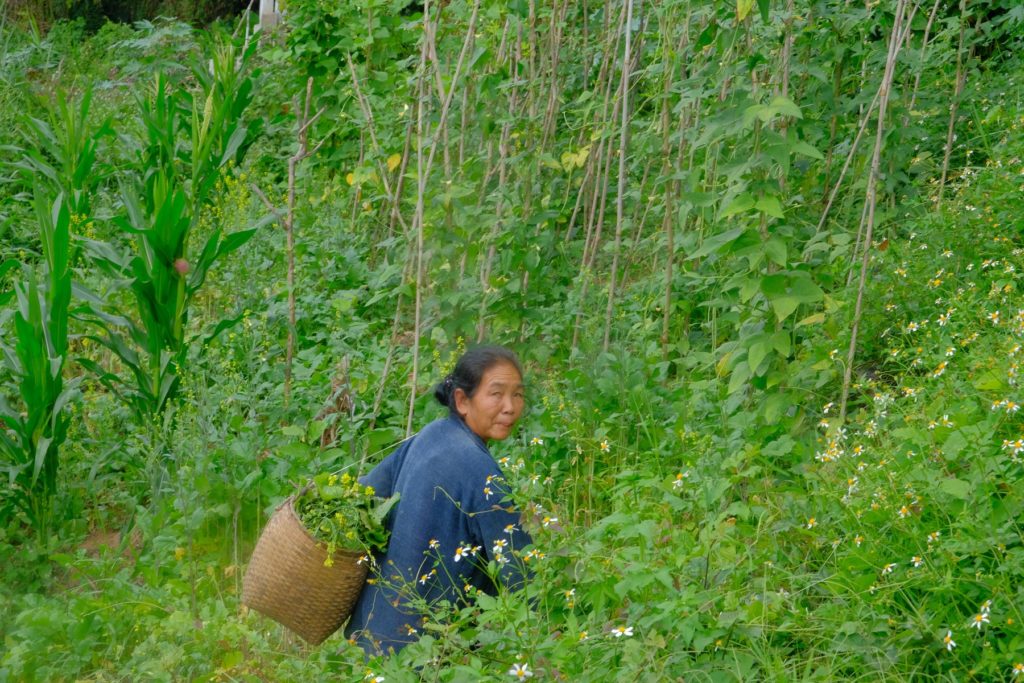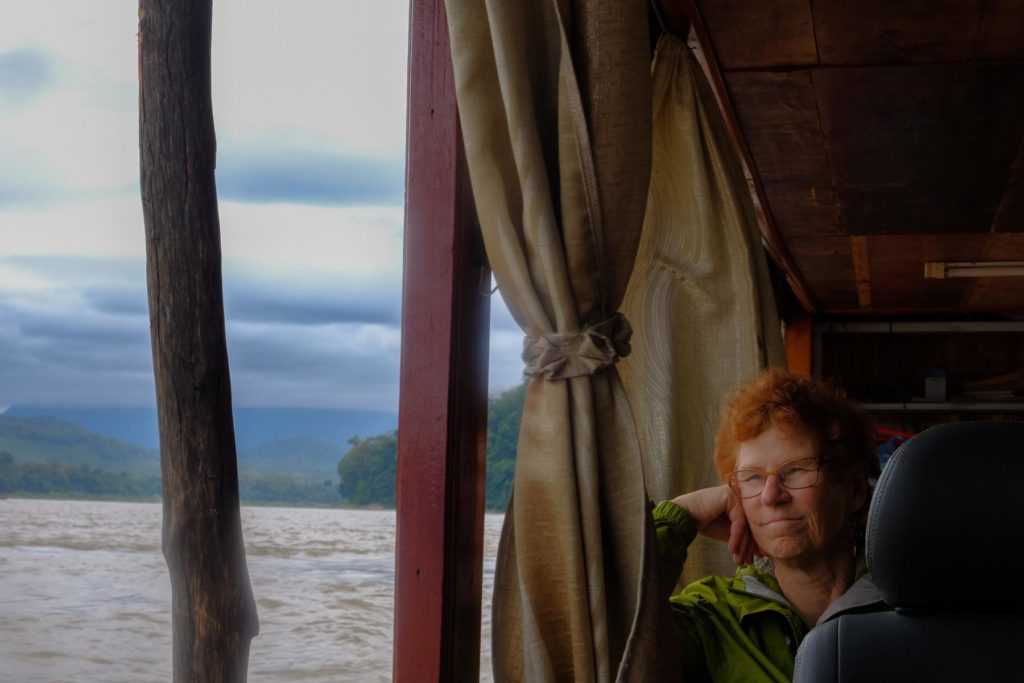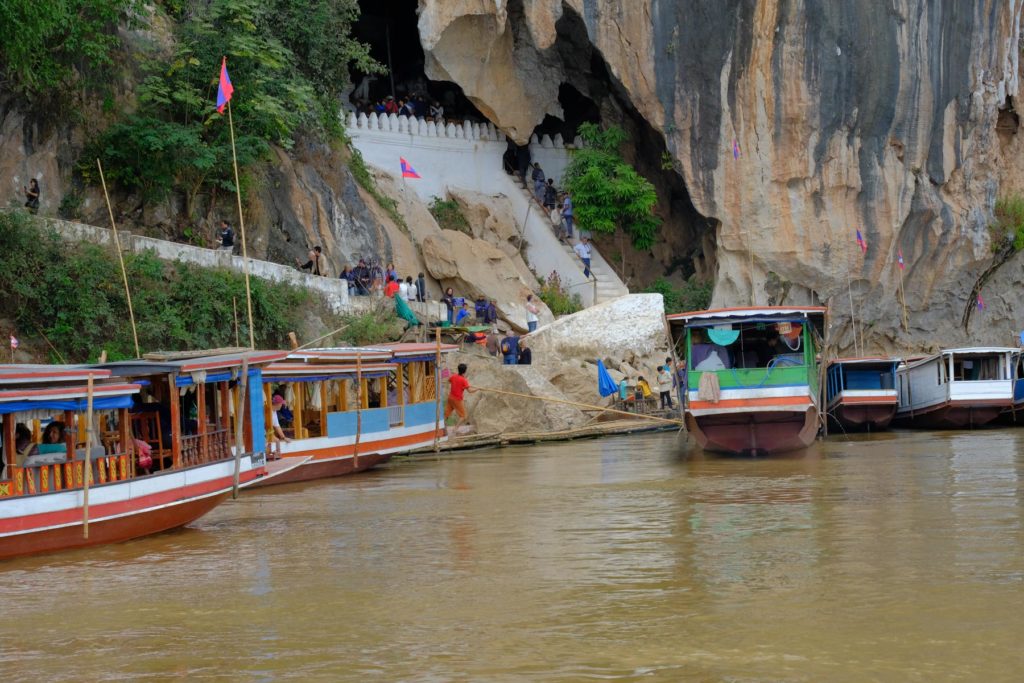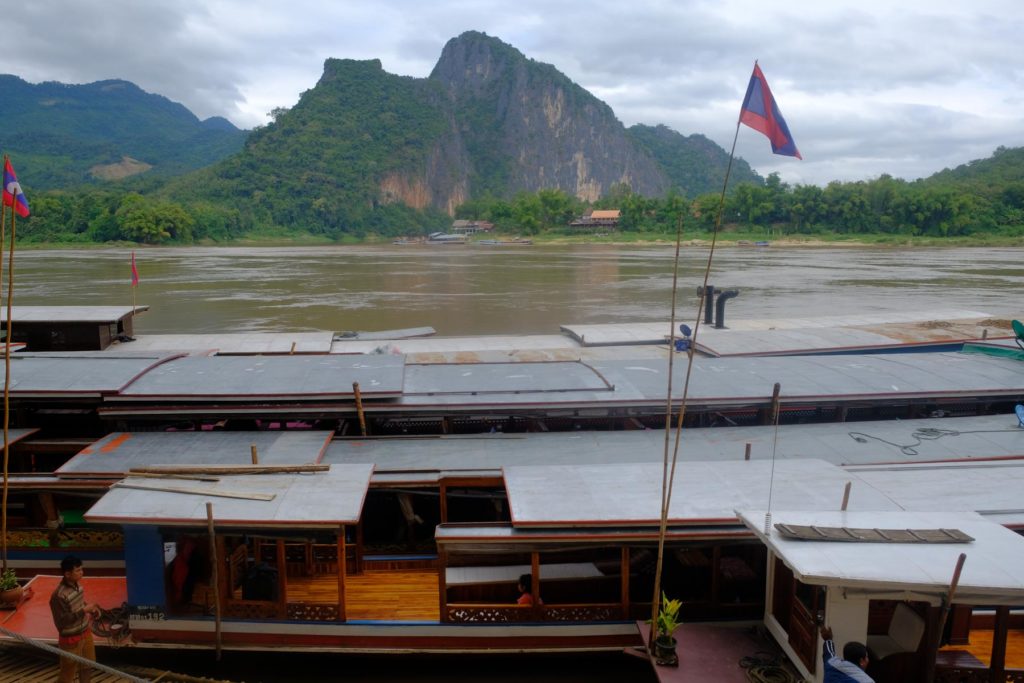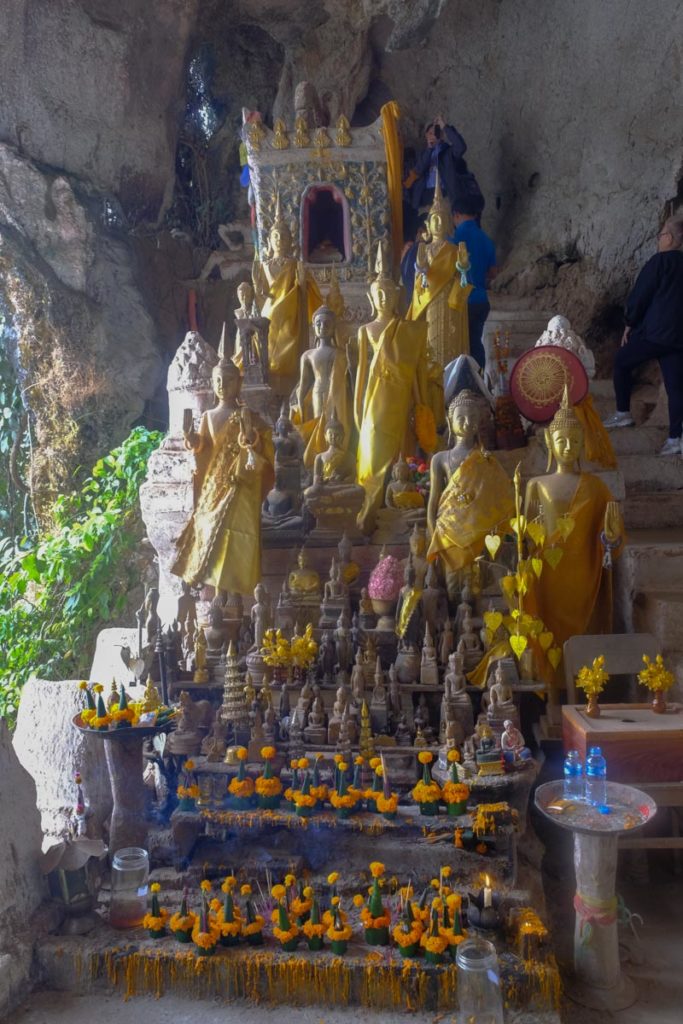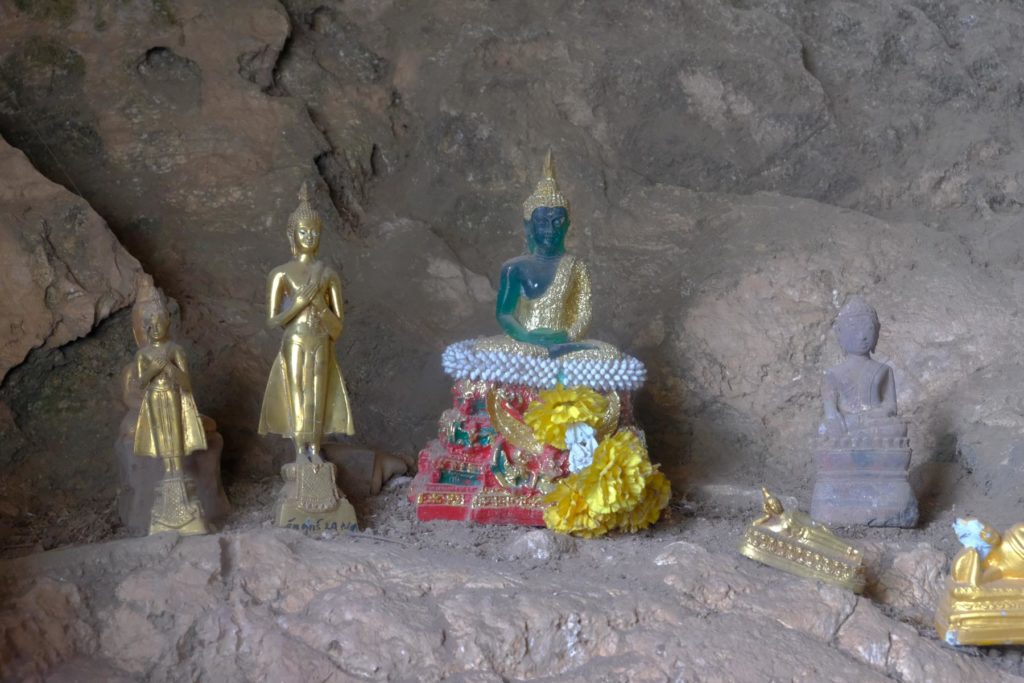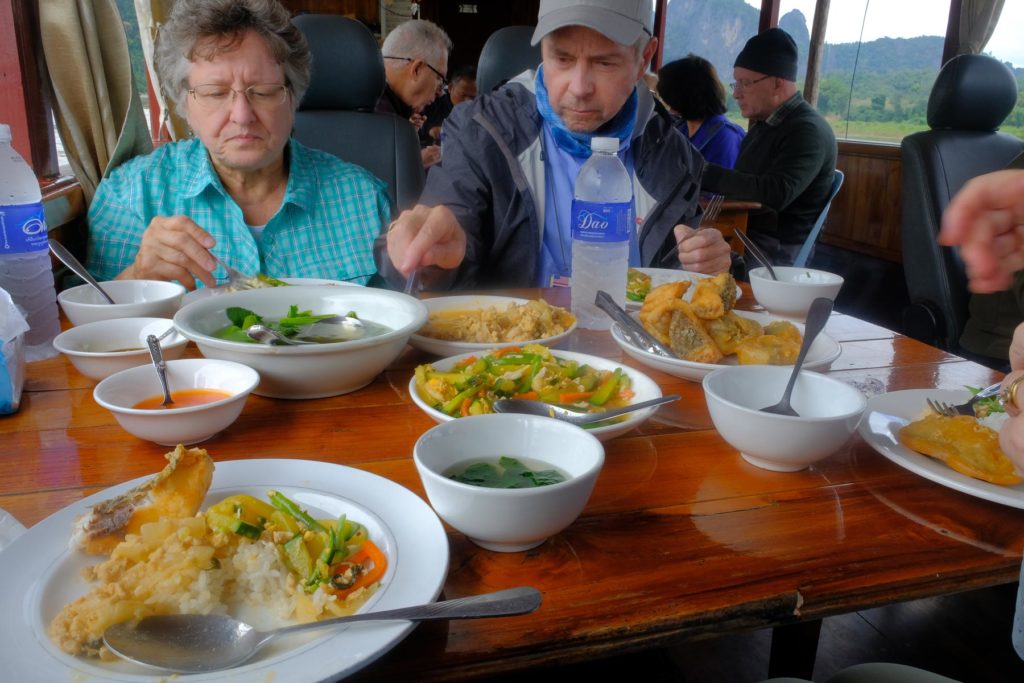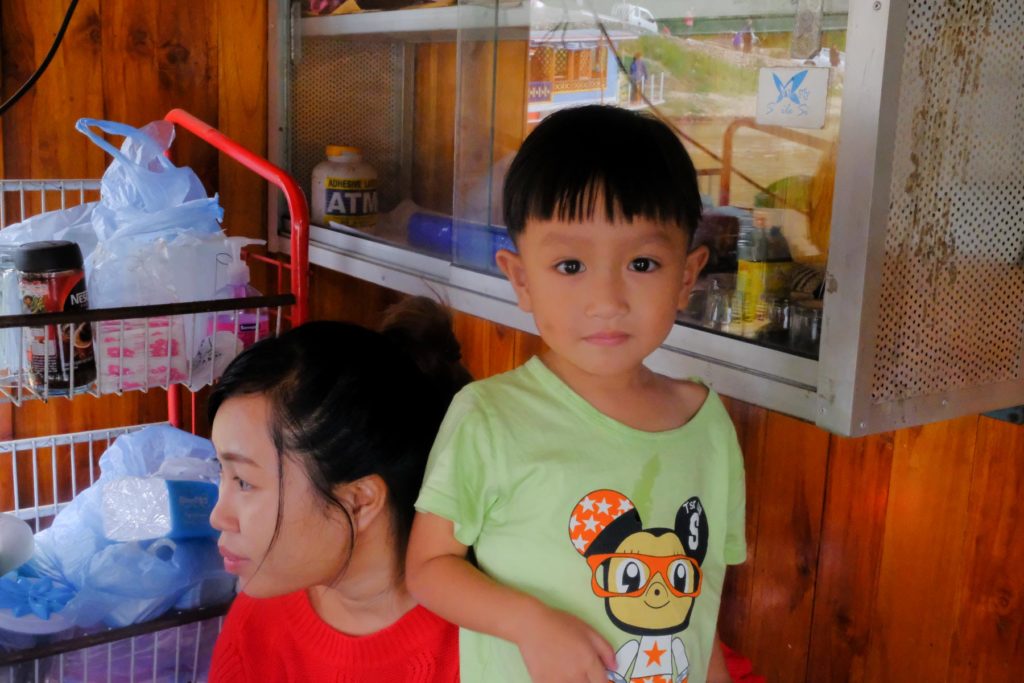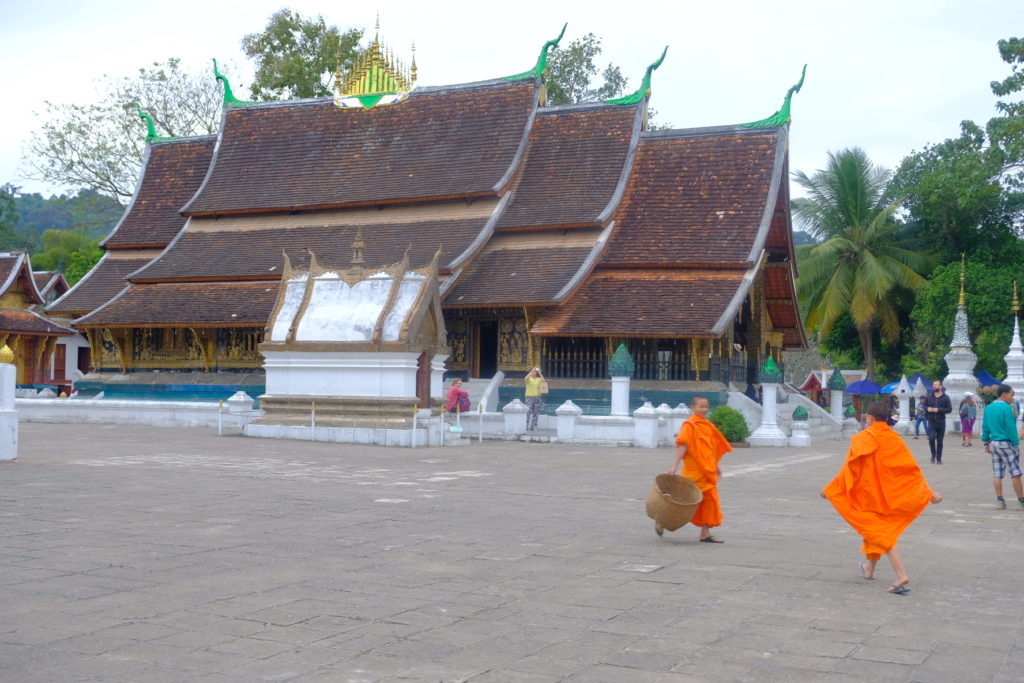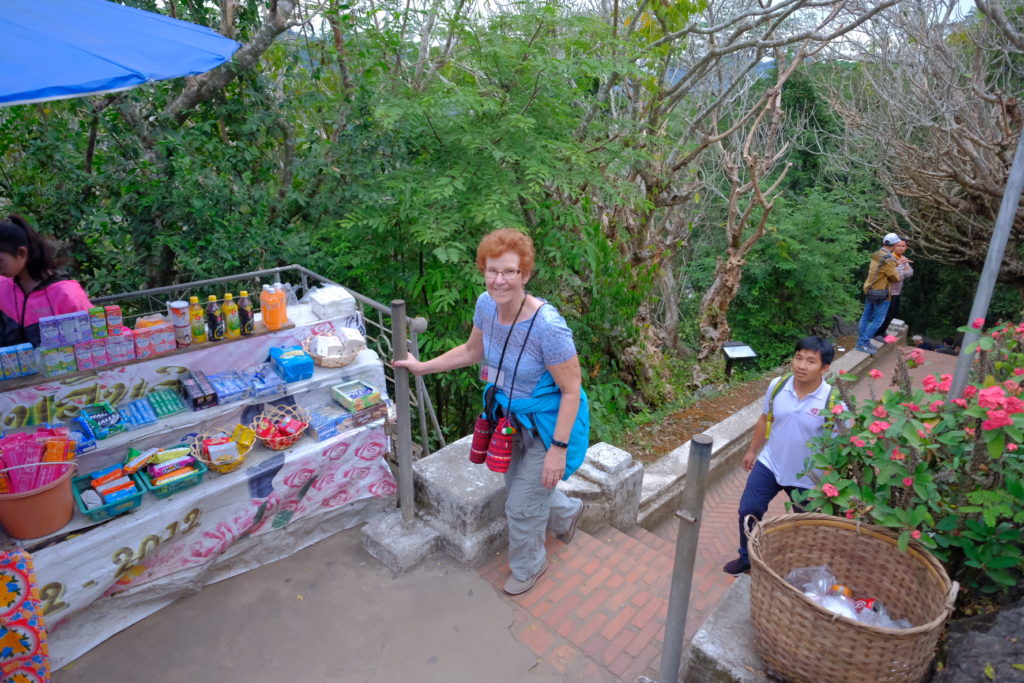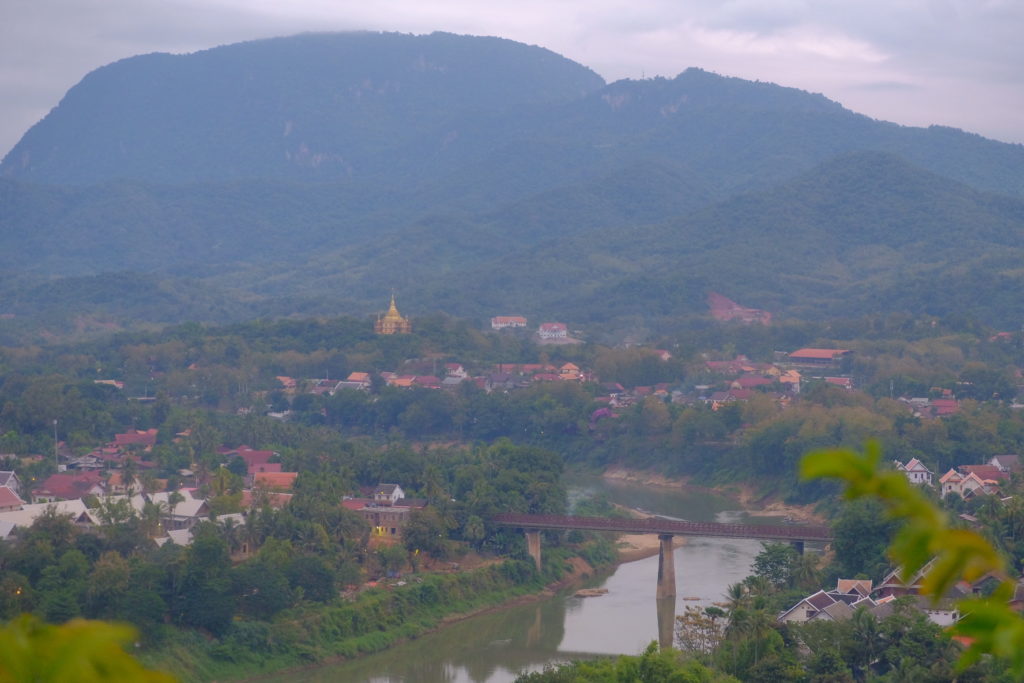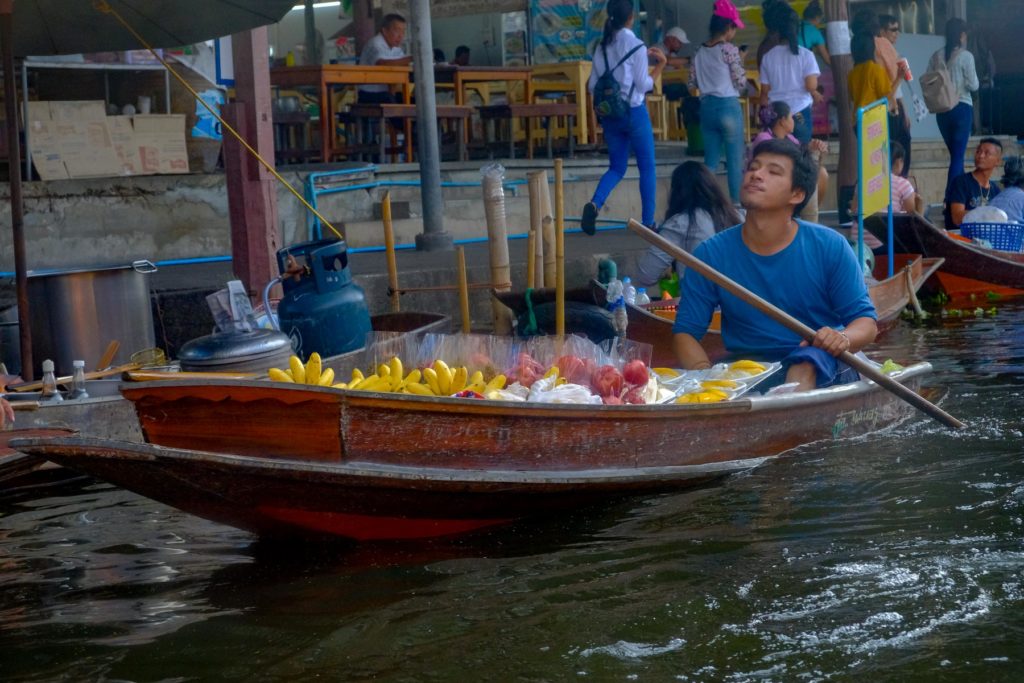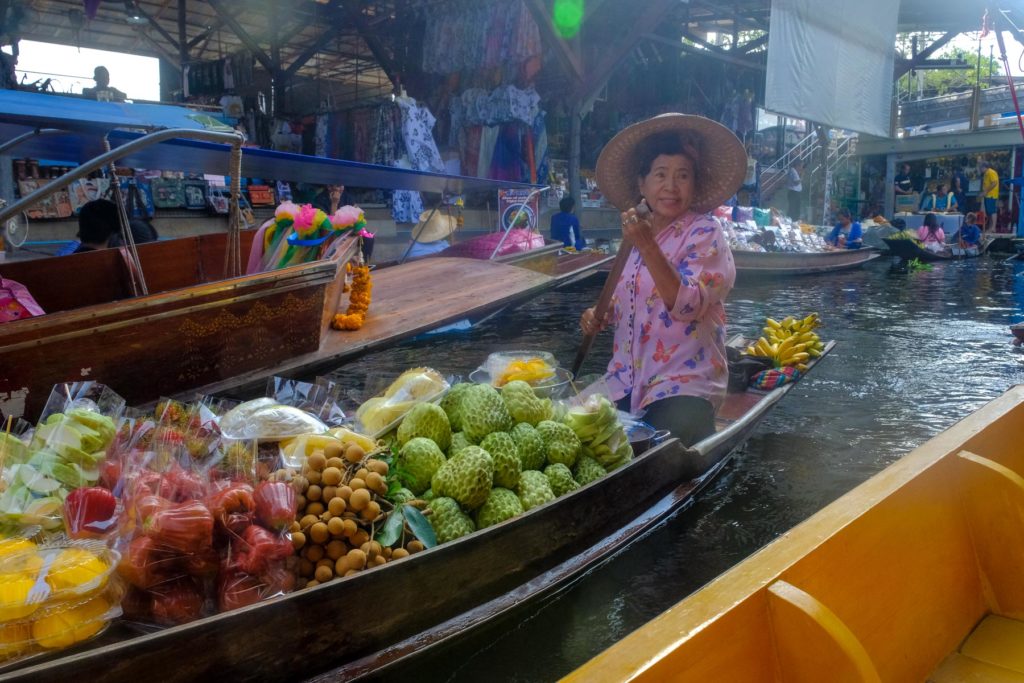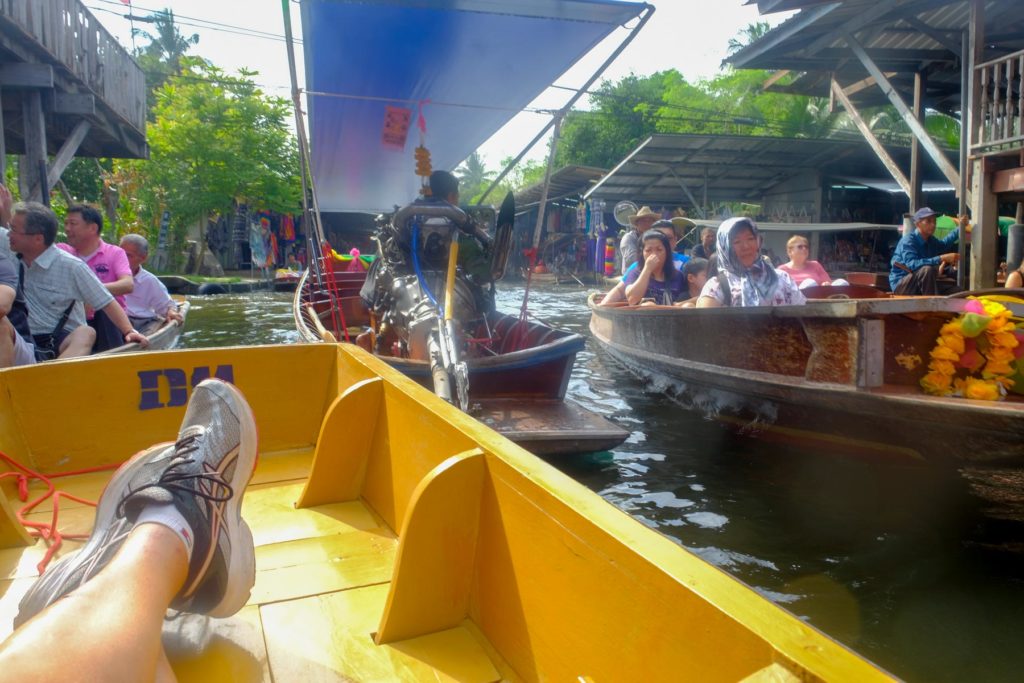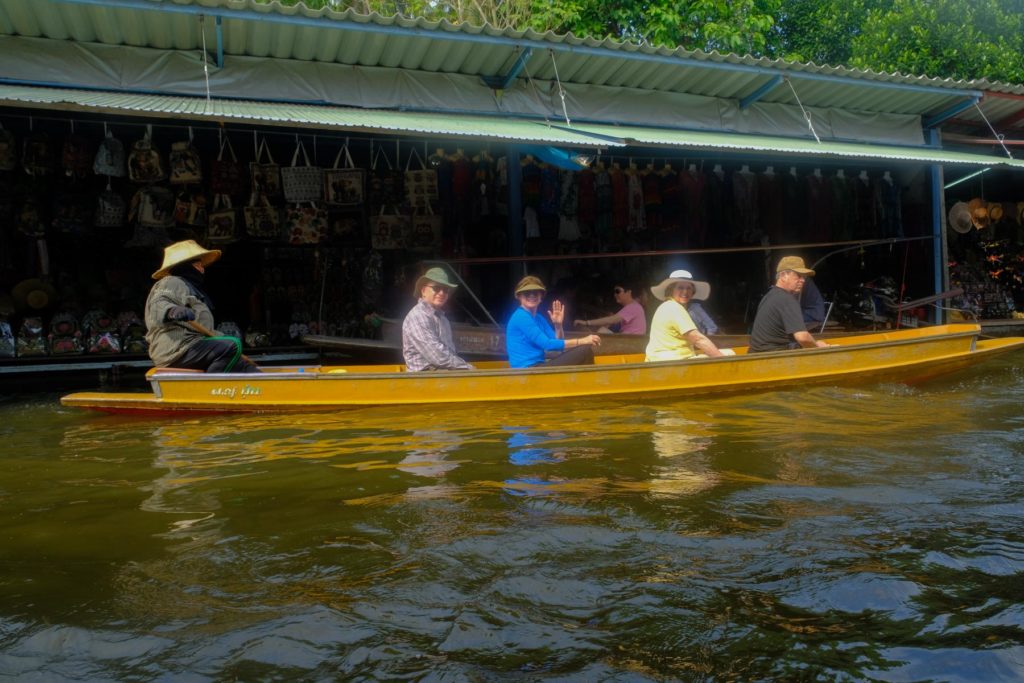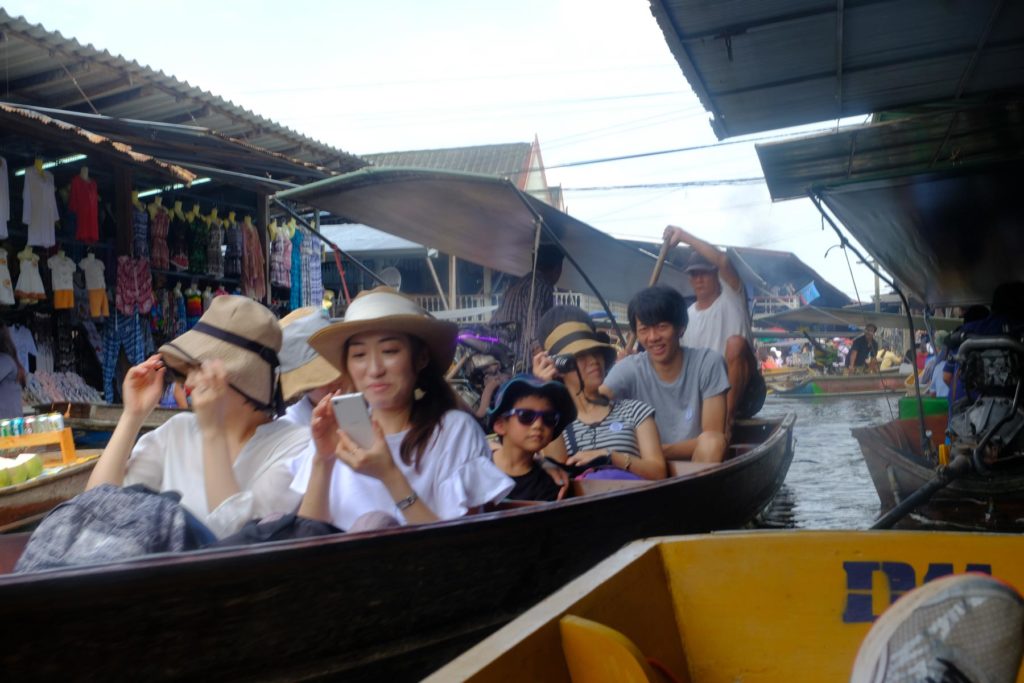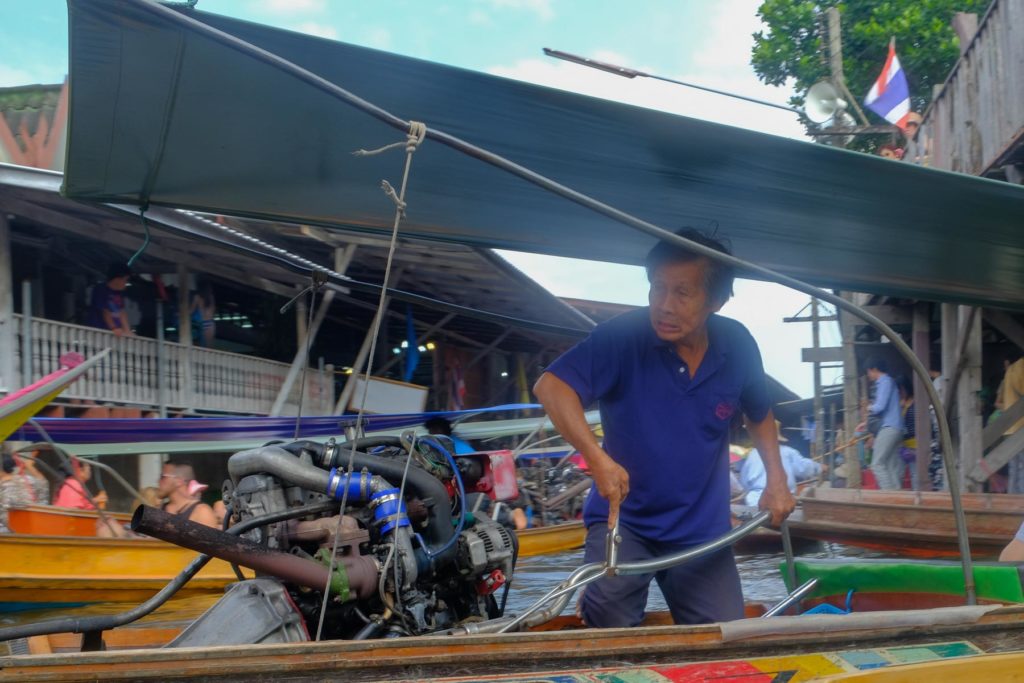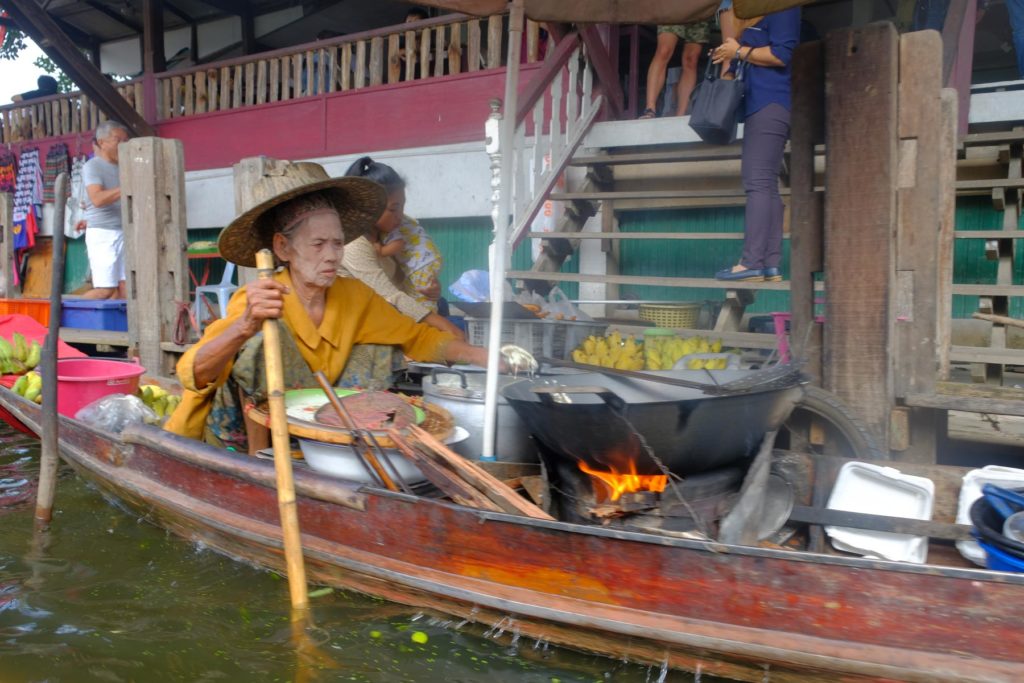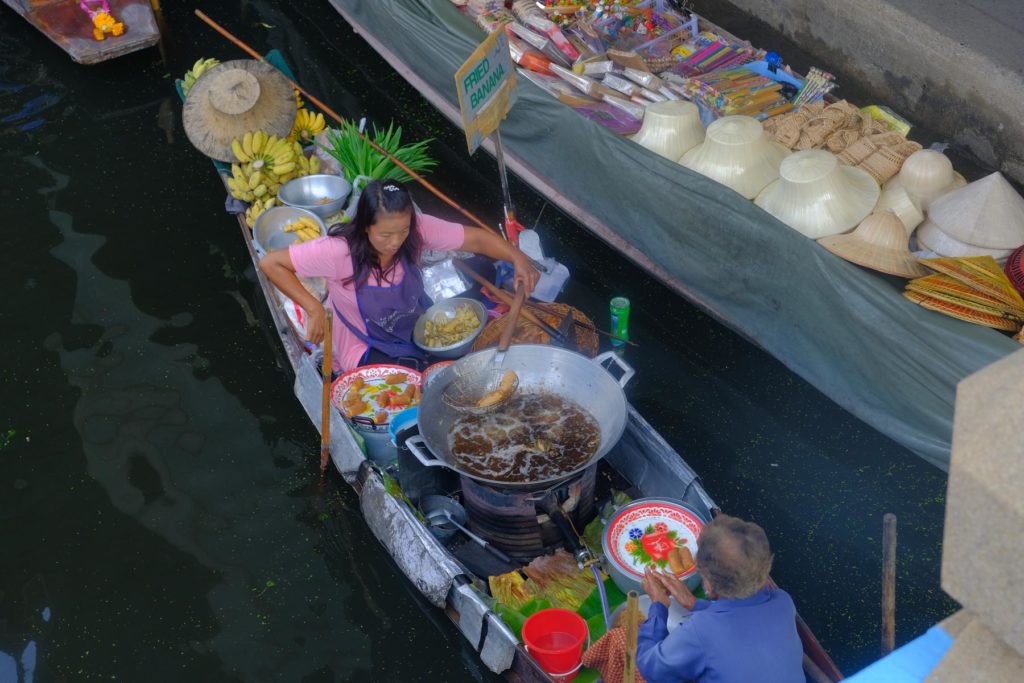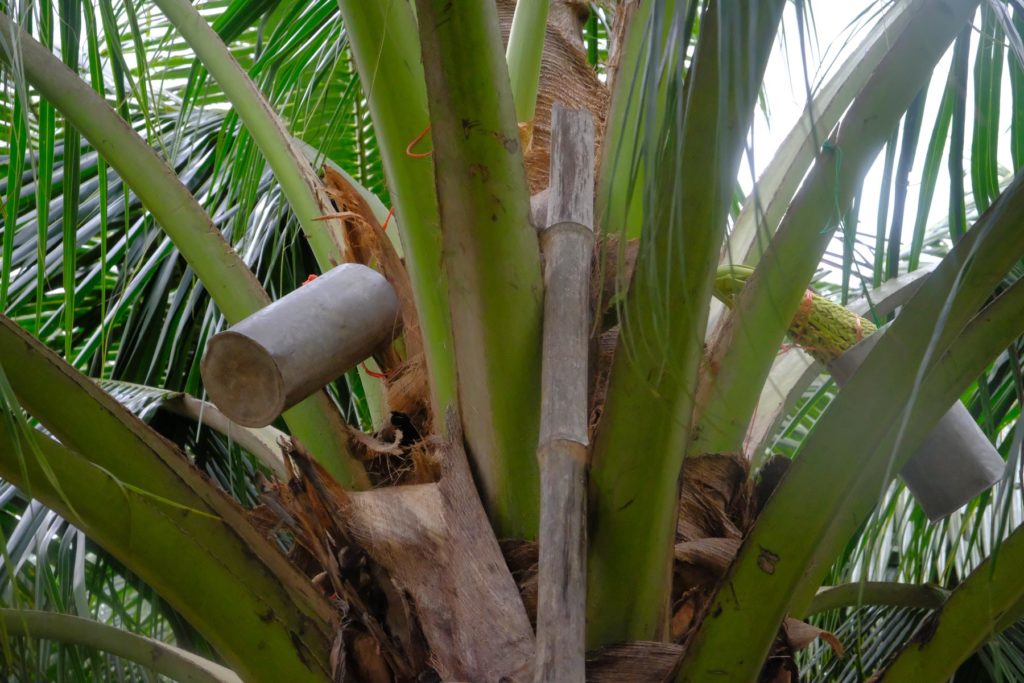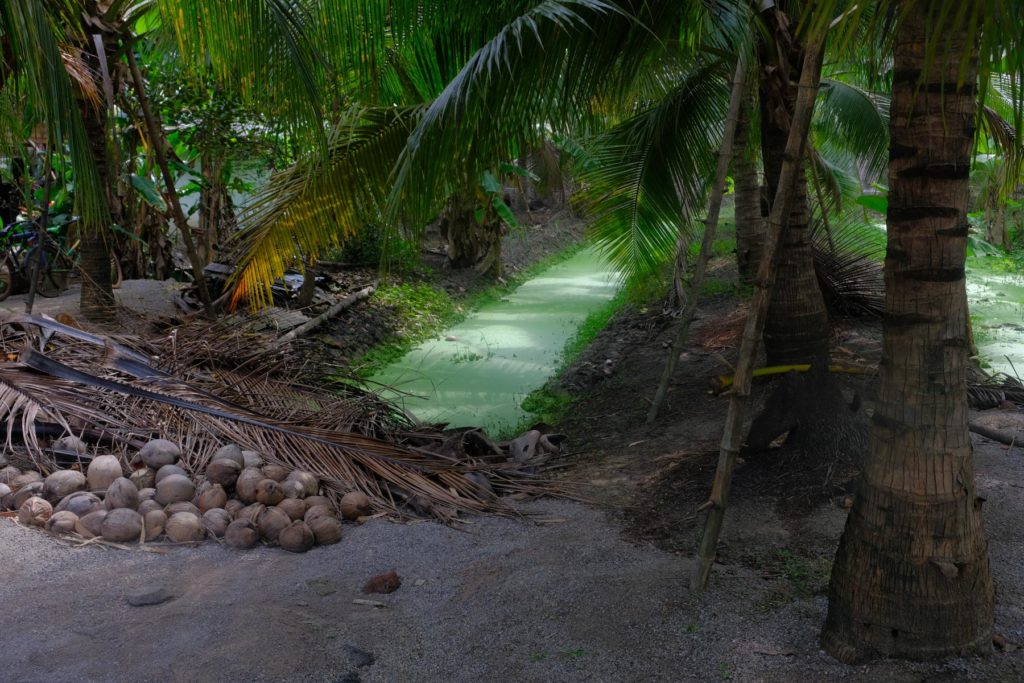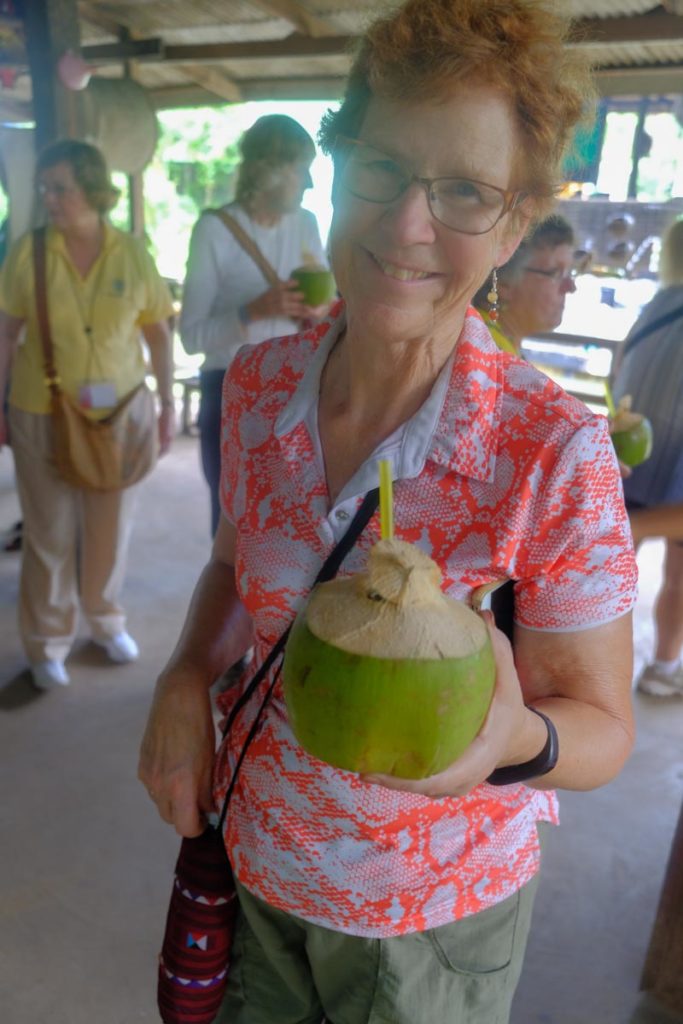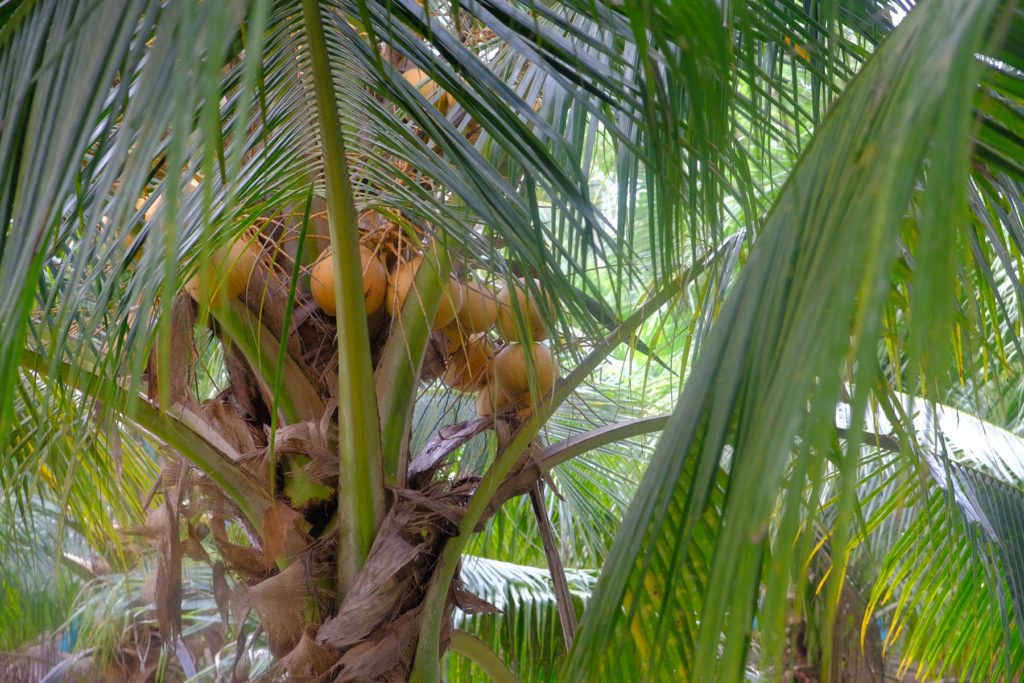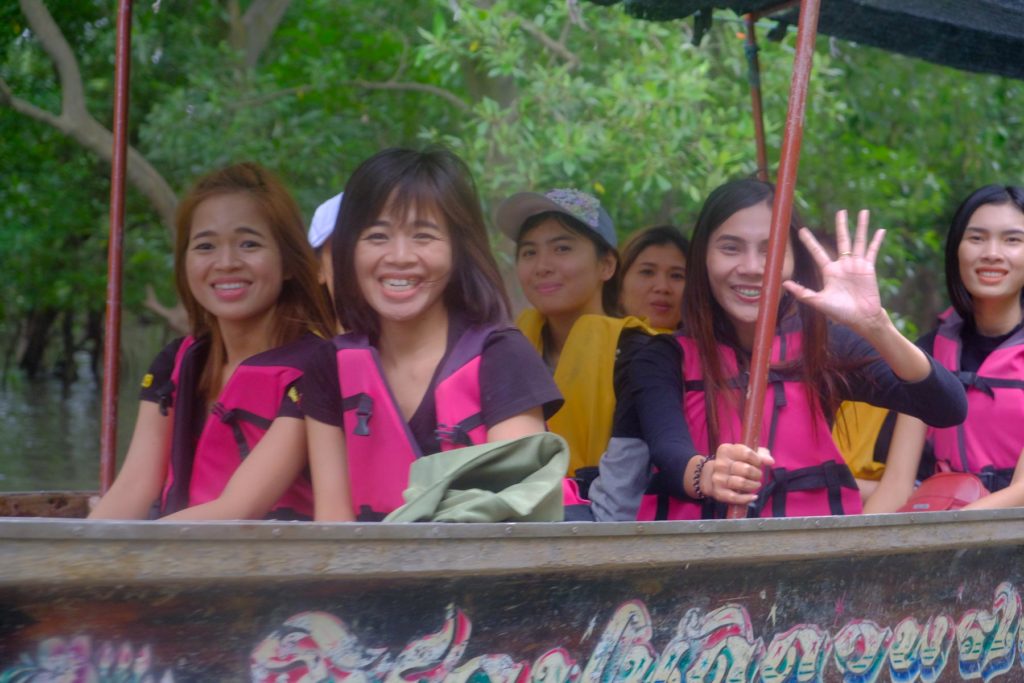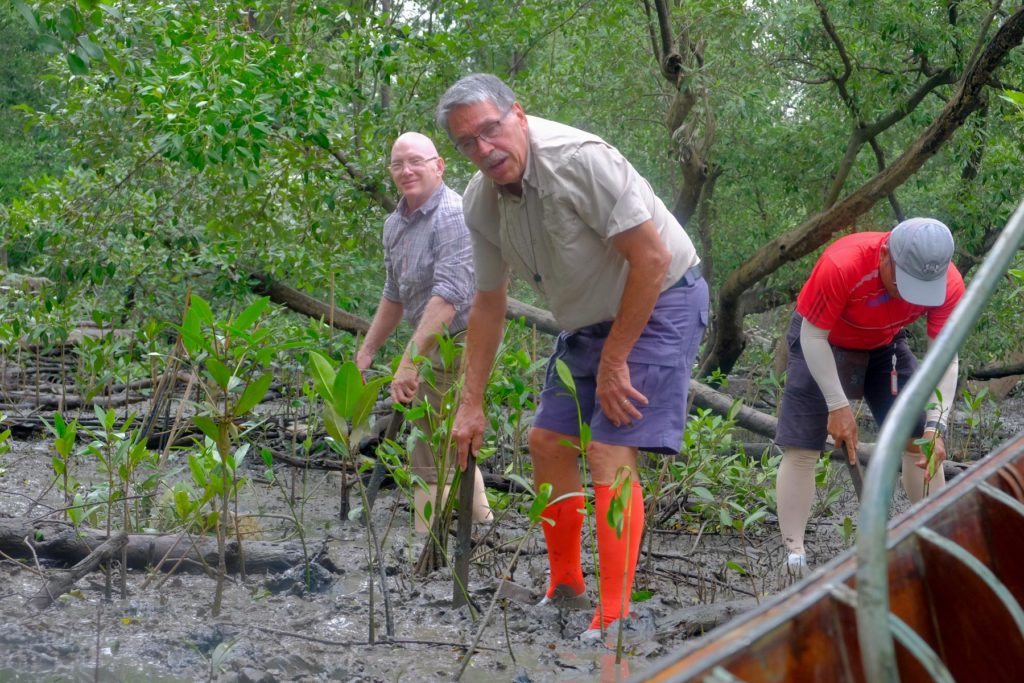Normally I don’t like to write about the little health hiccups of travel but since my current situation led to a “cultural learning experience” I thought I’d give you a high-level report. I’ve suffered for the past week with a cold, hacking cough, a rash over most of my body and for the past two days an episode of atrial fibrillation. Upon reaching Vientiane our guide Jack and the local guide Toui decided I needed to be seen. We agreed, mostly to figure out where the rash came from. Could it be a rare Asian insect bite? An infection I picked up while wading around in mud and salt water while planting mangrove trees? Or was it a side effect from taking Robitussin DM?
I went to a French clinic not far from our hotel (“Very clean,” Toui said.) where a young doctor from Japan examined me. Go figure. Bottom line: it’s a reaction to medication so she told me to stop taking the malarial drug and the antibiotic I’ve been taking for my cold, just like Rebecca guessed over the phone half a world away. The afib should go away in a day or two and the rash should subside on its own. The cold is gone. Now if I can just get rid of the cough.
Here’s the total bill for the visit
Office exam (1 hour) $37.00
Salve 1.50
Probiotic 1.50
Hotel Van 14.00
Total $54.00
Earlier, before we left Luang Prabang they took us to the Royal Palace Museum. I may not have the chronology quite right but the outline is as follows:
– The French showed up in the late 1880s, late by Indochina standards. They offered to help defend Laos from its enemies. The quid-pro-quo turned out to be total control of the country, slave labor for French construction projects and even forced export of Laotians to France
– Sisavang Phoulivong took over from his father as King of Luang Prabang and in 1946 united the three kingdoms into a single Laos. He was a loyal supporter of the French who reciprocated.
– His son Savang Vatthana took over in 1958 and ruled as King until 1975 happened and the Communists took over. He, his wife and two eldest sons were sent to reeducation camps and were never heard from again.
– Savang Vatthana’s brother got close to the Communists and was named the Red President. As President he was able to save many of his remaining kinfolk from disappearance.
–
Toui told us that most Laotians revere Sisavang Phoulivong , the next-to-the-last king but know nothing of his son the last king. The items in the Royal Palace Museum have no mention of him. Toui said he couldn’t talk to us about this subject because listeners would be taking note of what he said.
The flight to Vientiane, the capital of Laos, was short and pleasant. But we’re out of the mountains and the temperature and humidity are back up. Luang Prabang was a nice respite from the heat.
This evening we went for a home hosted dinner with a 47-year-old man and members of his family. The relationships were not clear; one was identified as “grandmother” and two young kids (5 and 11) were not sisters but related somehow to the grandmother. Most of the cooking was done by our host’s sister. But whatever, the food was traditional Laotian food including sticky rice, several vegetable dishes and a chicken dish. The deal was to place the food on our plate, roll up a small ball of sticky rice and use it to pick up some food. Actually, transferring the food to your plate was a Western adaptation; our hosts dipped their sticky rice into the communal plates.
Our host was, at age 18, drafted into the Lao Army and sent to the frontier to fight in the shooting war with Thailand. He and four buddies didn’t like being shot at so one night they disserted and found their way to Vientiane. He dares not return to his village home across the Mekong from Luang Prabang because he would be thrown in jail.
From that beginning he worked his way from manual labor jobs to washing dishes in a restaurant. He spent three years in Germany, a year in France and a year in Italy working in Laotian restaurants in those countries. He returned to Vientiane, went to cooking school for four years and for the past 18 months owns his own restaurant.
A full day of touring tomorrow but I’m going to do only the easy parts. I’ll count on Judy to take good notes.


